Best laptop for architecture students and architects 2025: Our top picks for 3D modeling and rendering
We tested out the best laptops for architecture majors, professionals, and students at every level ahead of this year's Prime Day sale.
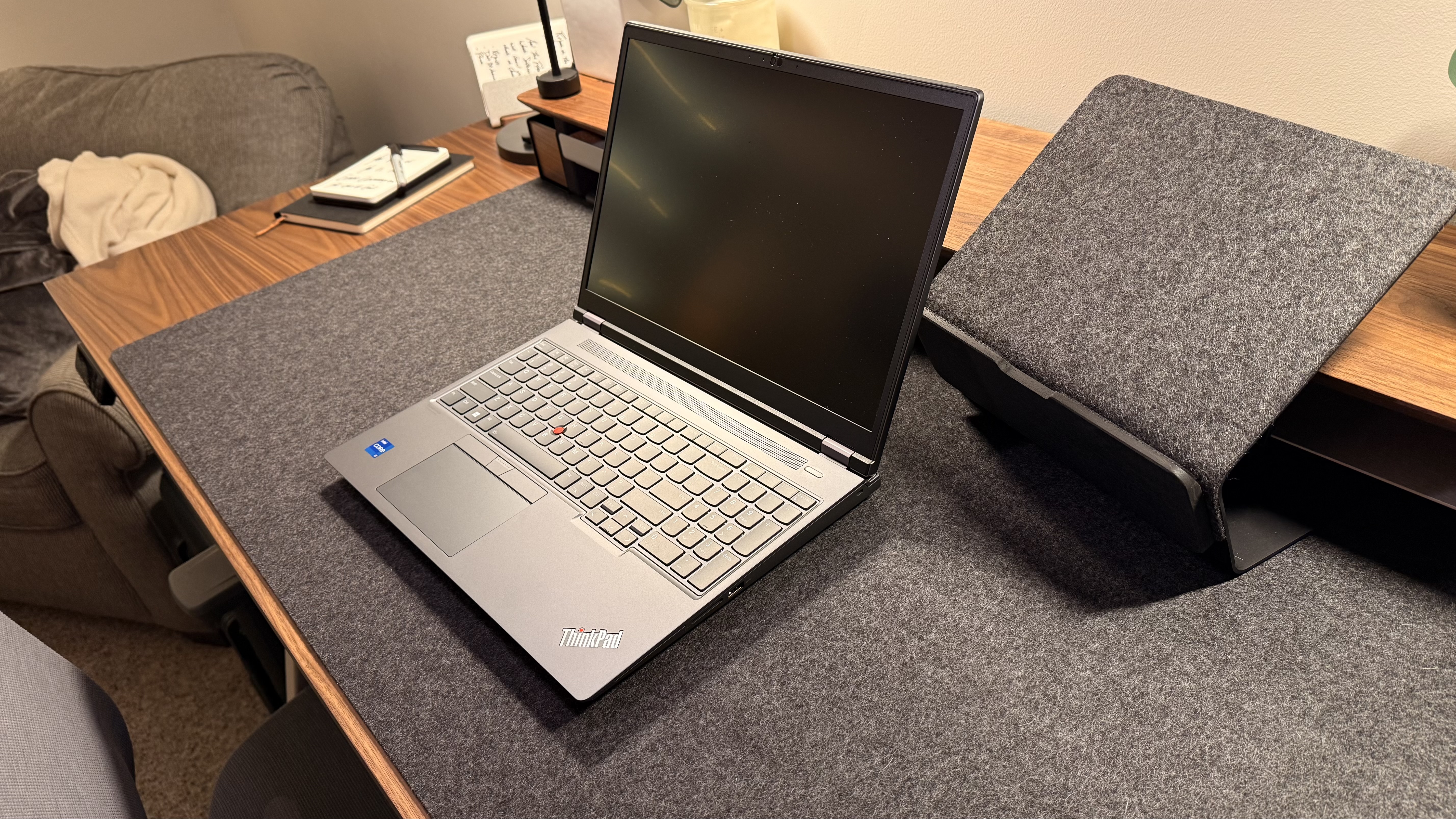
The best laptops for architecture students and professional architects are designed to handle 2D and 3D modeling and rendering. With Amazon's Prime Day sale coming up, I've selected the top 12 machines you can get right now, with a focus on graphic capabilities and bigger screens for a more detailed overview of your designs.
My overall pick is the Lenovo ThinkPad P16 Gen 2, a mobile workstation that's impressively powerful and built to last not just the duration of your course, but well beyond. It also features one of the best typing experiences you can get on a portable. For those on a budget, the HP Victus 15 remains a solid pick thanks to its discrete GPU and low price, and I've also included some big-screen beasts with top-end specs.
You'll see plenty of crossovers here with the best gaming laptops and my round-up of the best laptops for engineering students, too, as these machines are all centered around graphical prowess. When choosing good laptops for architecture majors, I've opted for those we've personally reviewed, with higher-end dedicated graphics cards and plenty of RAM for the smoothest possible experience when running CAD and architectural software.
July 2025: In my latest update, I've refreshed the list with three new to include the best portable device, the best 2-in-1 and the best workstation for architects and architecture students.
The quick list

The Lenovo ThinkPad P16 workstation is a performance-focused powerhouse, built for designers, creators, and professionals, and ideal for CAD work.
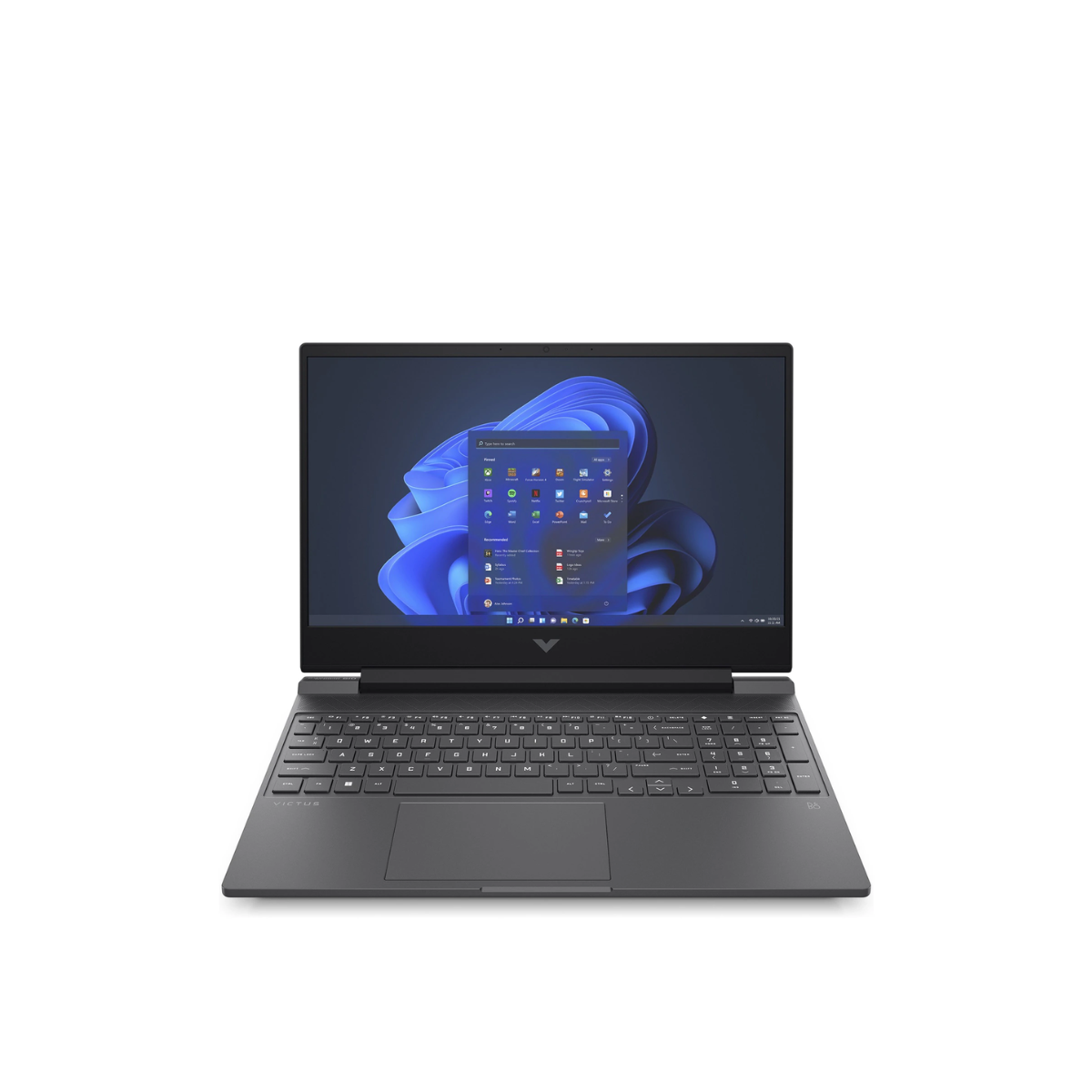
A budget gaming laptop with a discrete GPU that has all the minimum specs you need for running architecture apps in class.
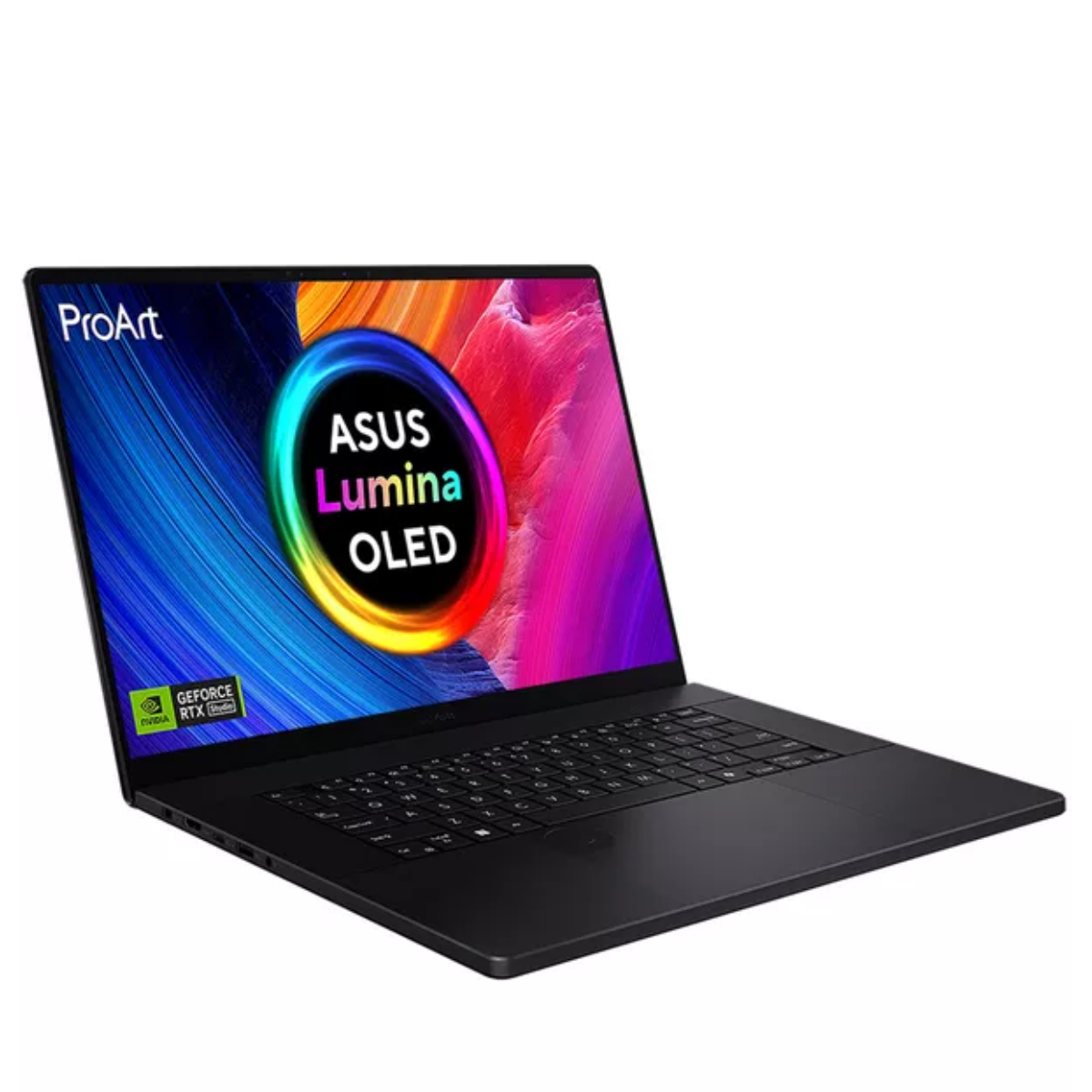
A stunning 4K OLED display is the crowning feature of this laptop that we found offers a true alternative to the MacBook Pro.

Apple’s latest MacBook Pro with the M4 Pro processor delivers inspired performance across the board - so long as you’re not using Revit, it’s incredible.
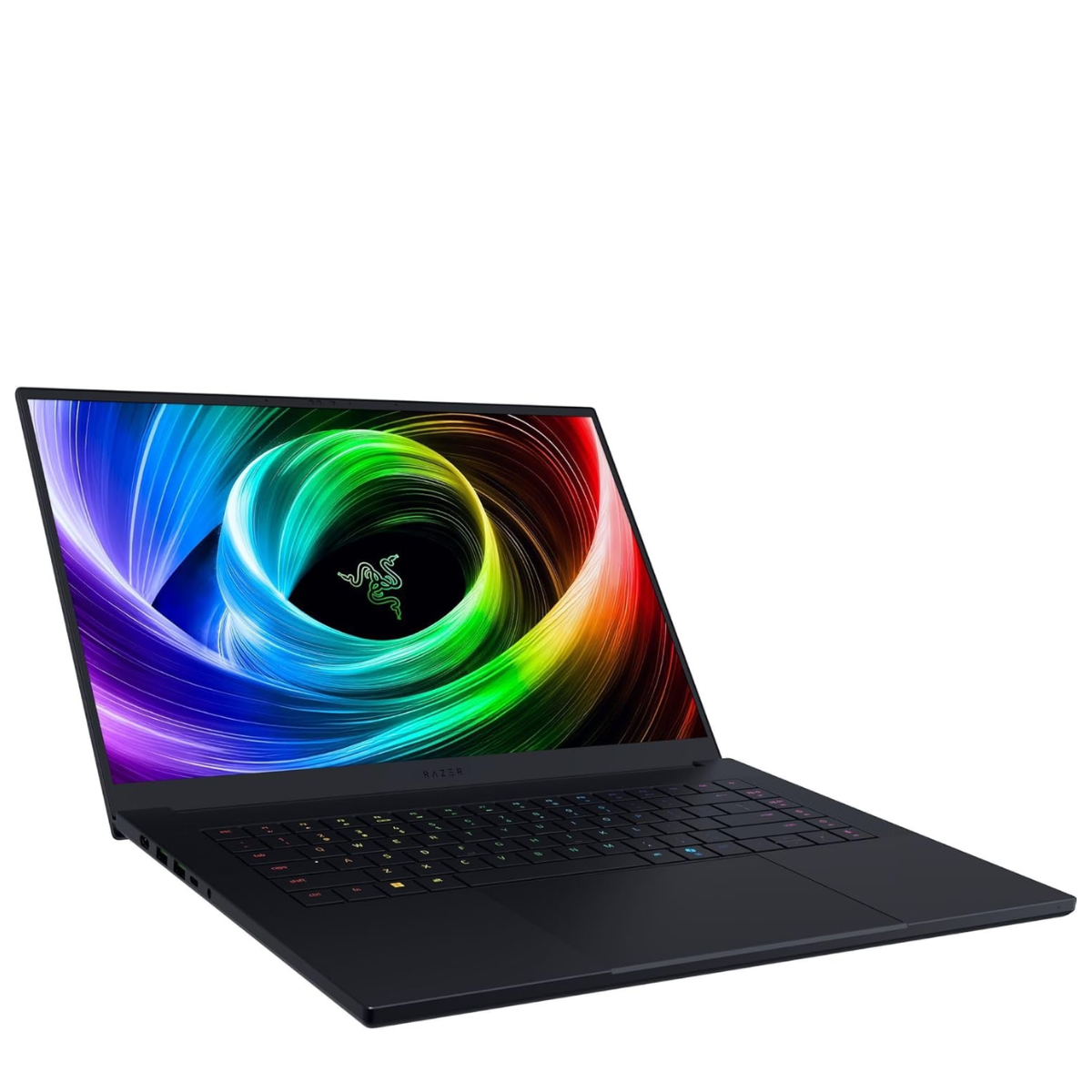
One of the best laptops for gaming and studying, the seriously sleek Razer Blade 16 is well-equipped for running architecture software.
Load the next products...
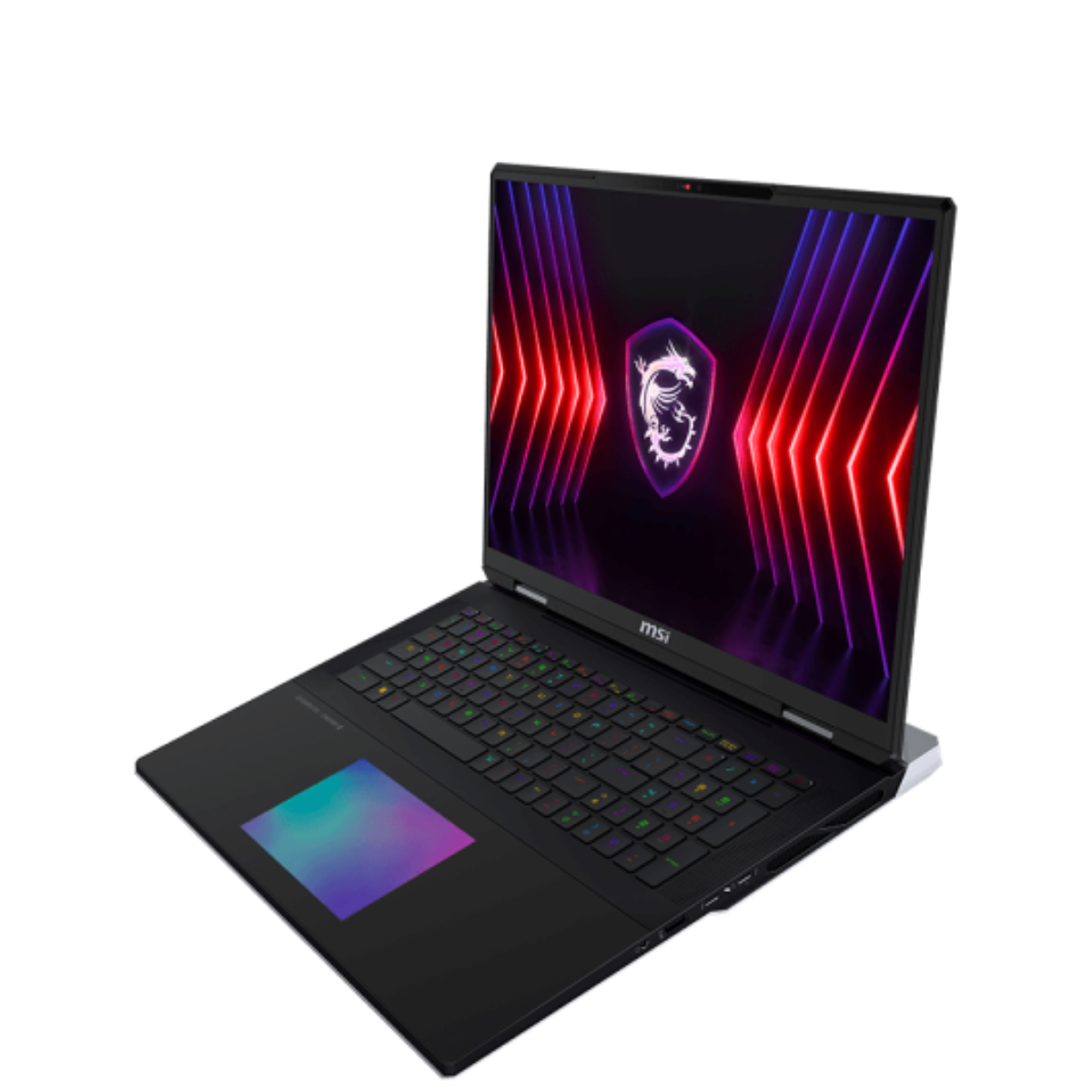
Another big-hitter with a big-screen, this laptop is capable of some serious graphics work - and the new 2025 model is loaded with top-end specs.

One of the most powerful laptops money can buy, it’s well-suited to graphics-heavy workloads and has a great typing experience.
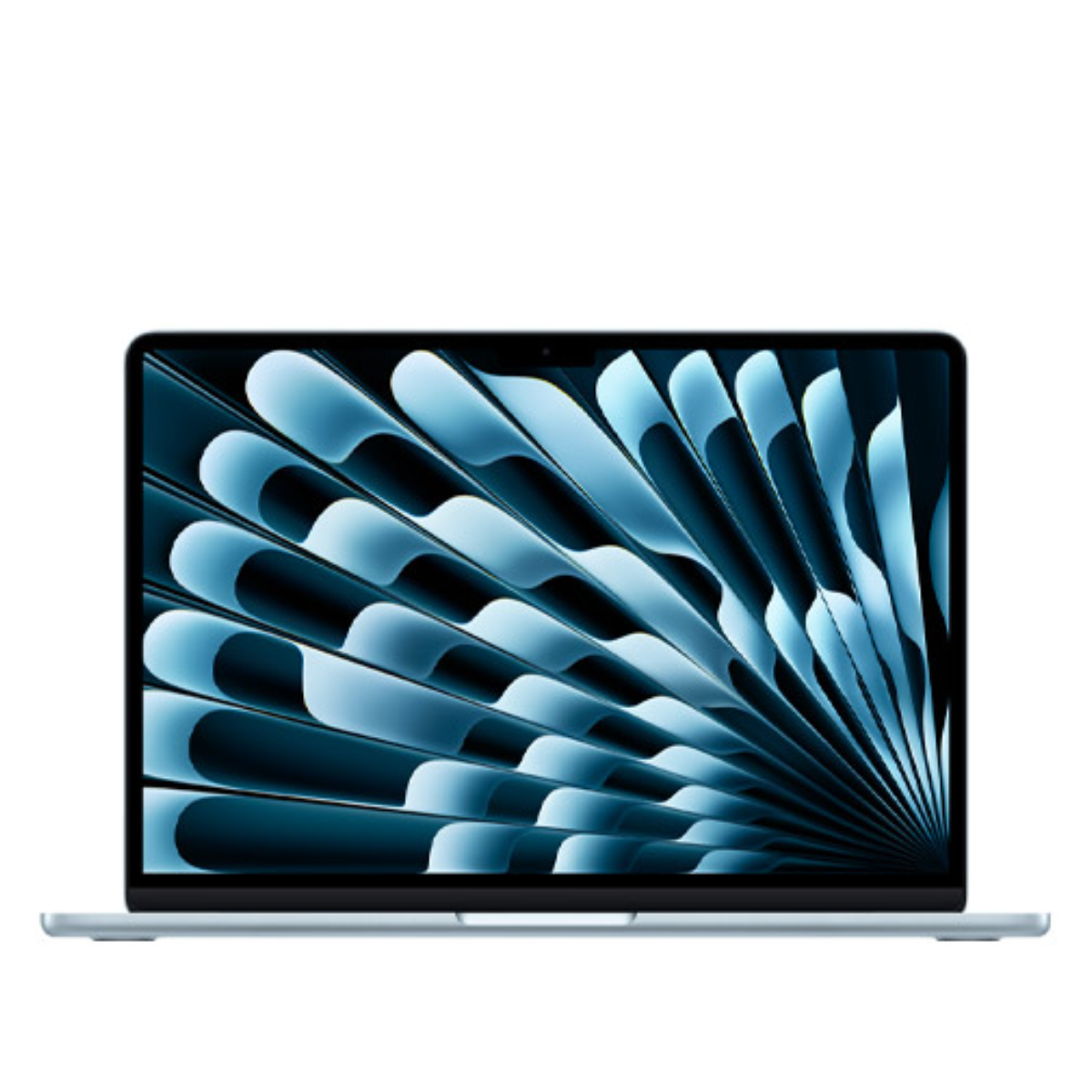
Apple's slimmest and most compact machine is the best for working on the move, with excellent power and a great display.
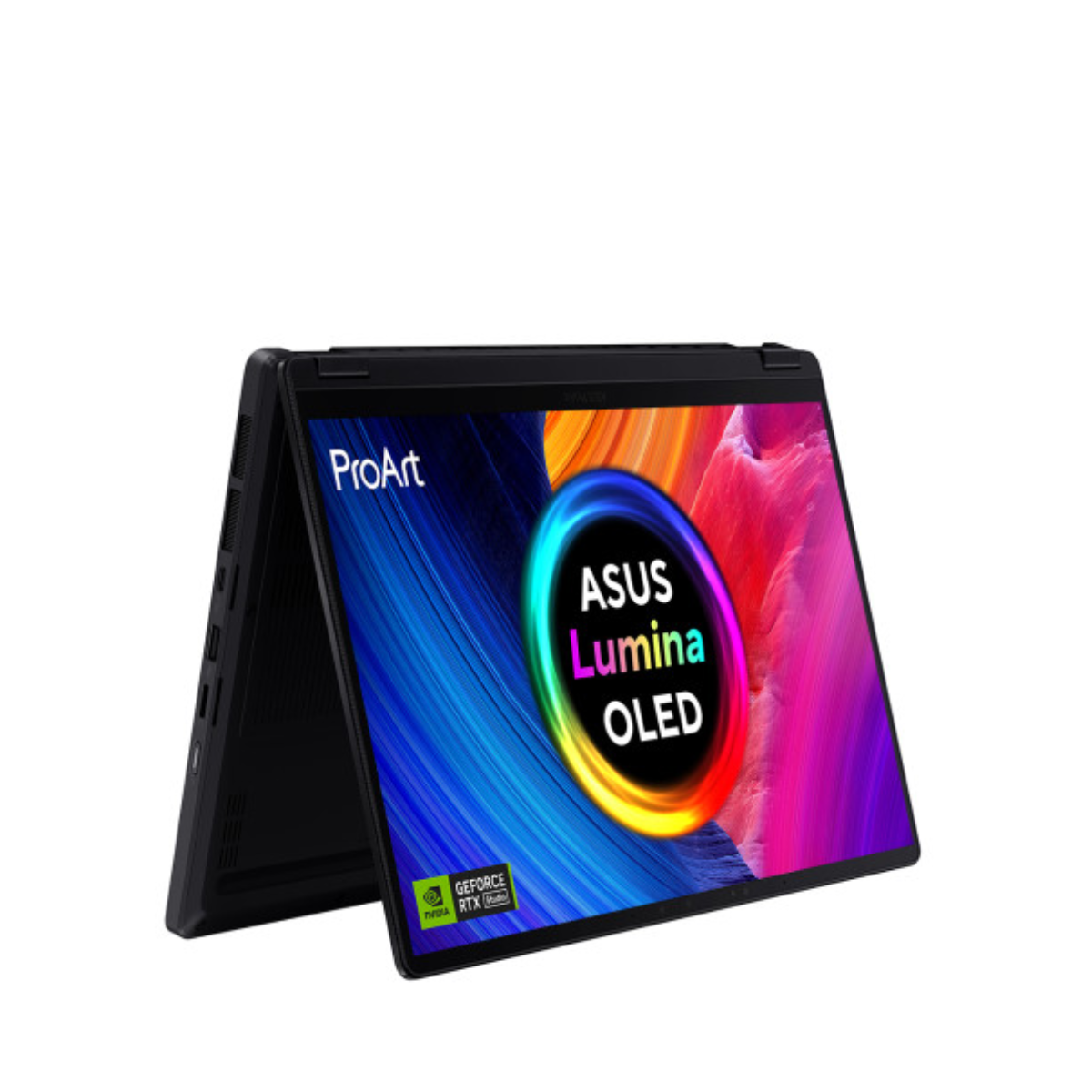
With a dedicated graphics card and a stunning OLED panel, the 13-inch Asus ProArt PX13 is one of the most versatile devices you can pick up.

You won't find a workstation as capable and compact as this, and you can take advantage of an expansive 16-inch OLED display alongside the best hardware to run all your intensive applications.
Best laptop for architecture students overall

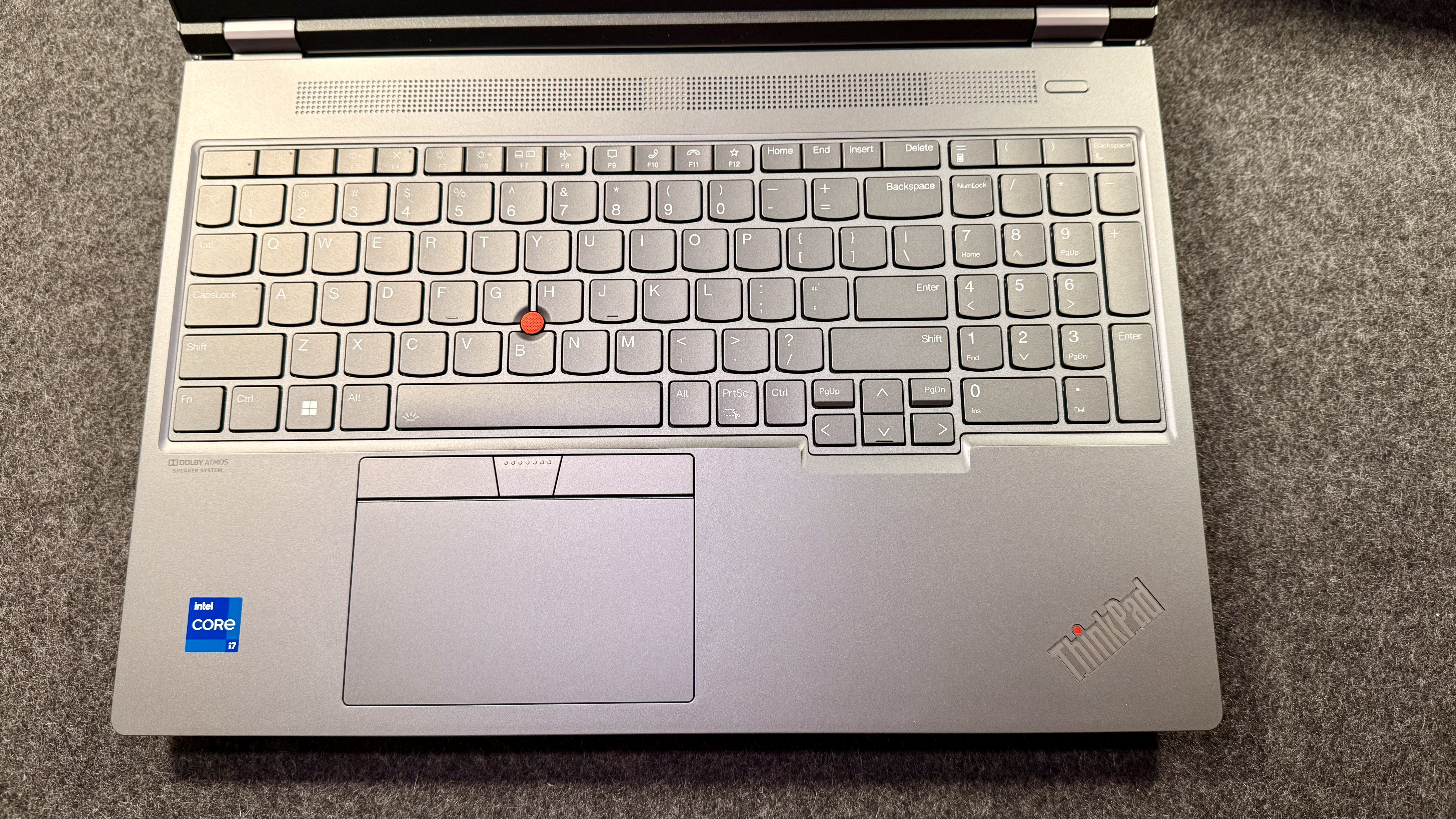
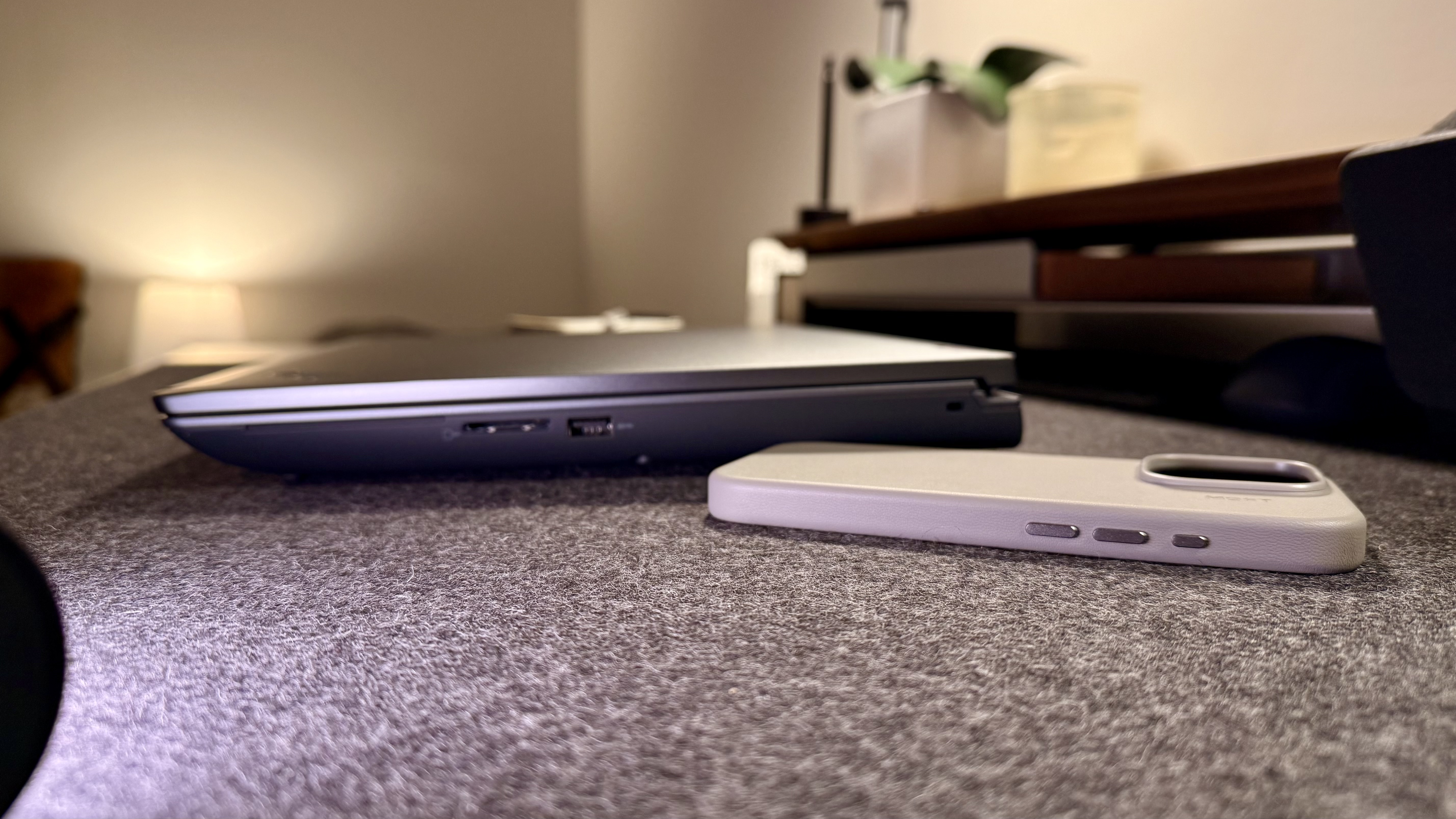
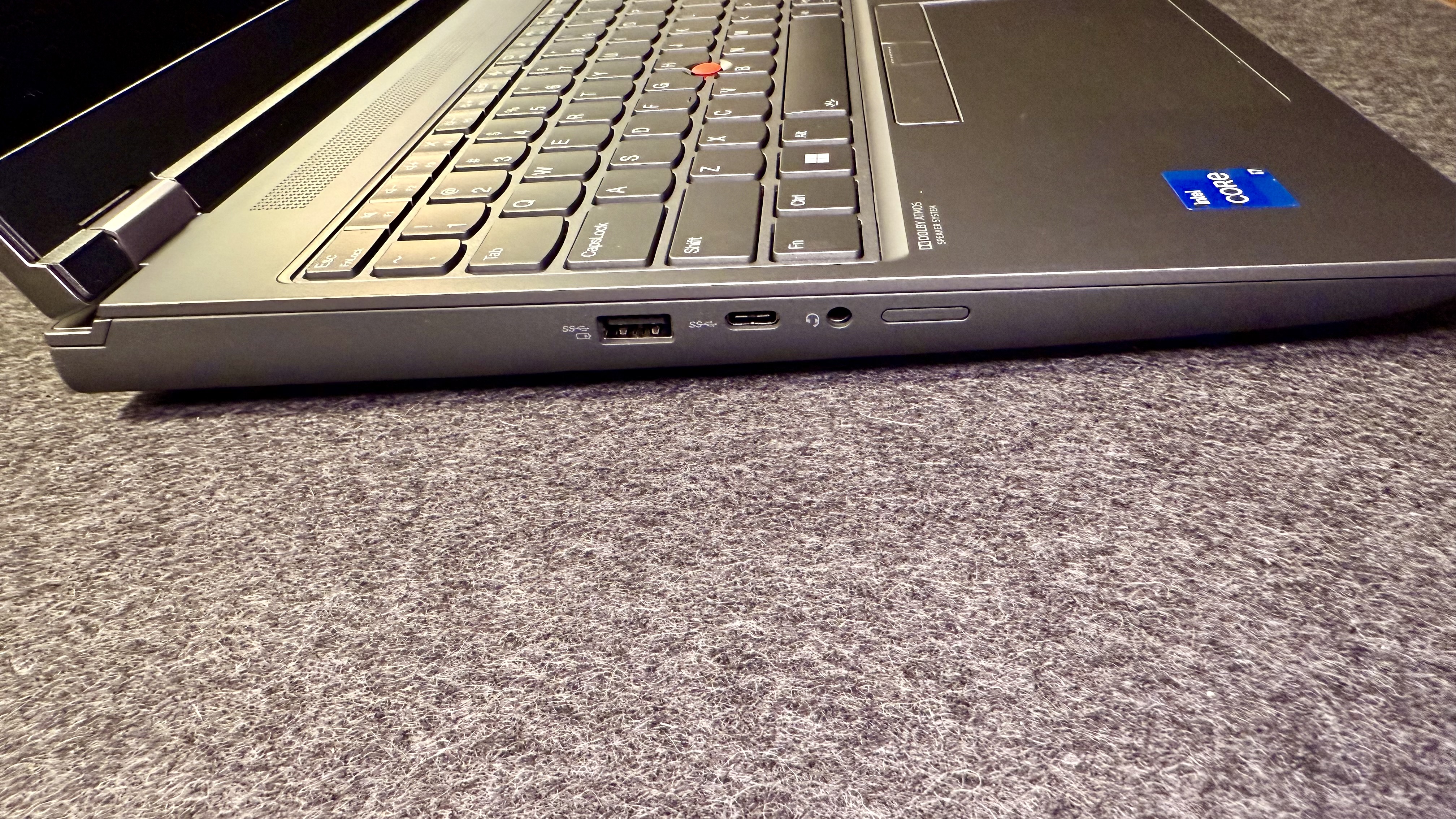
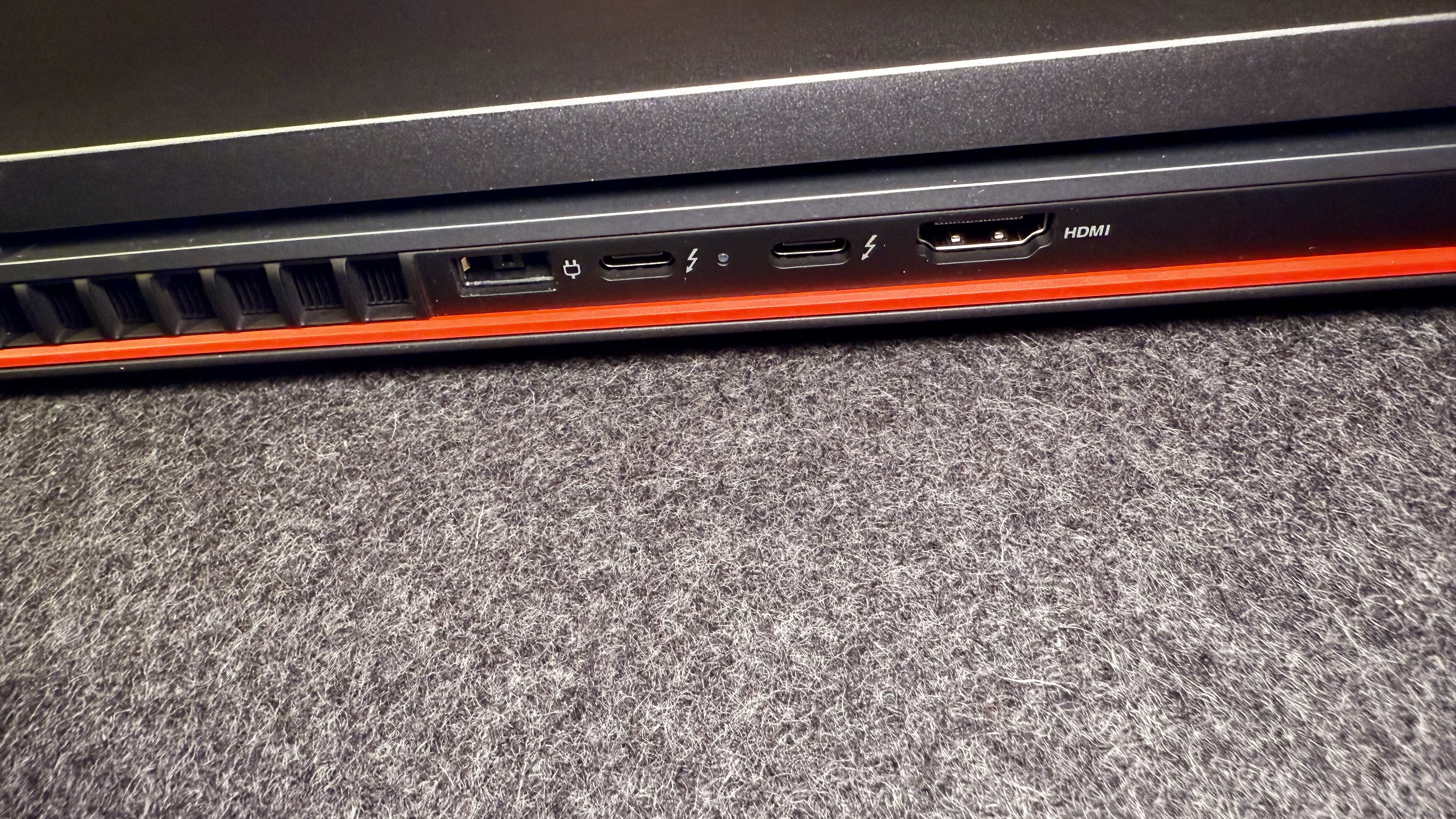

Specifications
Reasons to buy
Reasons to avoid
✅ You want a fully specced mobile workstation: Lenovo’s P-series laptops are designed for heavy workloads, with the specs to prove it. Even with the base configuration, it’s well-suited to running architectural apps (although I’d increase the RAM to at least 32GB).
✅ You want a top keyboard for essays: One of the reasons I love the ThinkPad line is that most models, including the P16, offer the best typing experience I’ve had on a laptop.
❌ You want a cheap laptop: This isn’t a budget pick, especially at the max configuration - with the specs and performance here, it’s more of an investment for your whole course and beyond.
❌ You want something lighter and more portable: While you can carry this around campus pretty easily, it’s still notably heavier than a lot of laptops, weighing 6.5lbs.
The Lenovo ThinkPad P16 is a fully specced mobile workstation that’s designed for heavy workloads - and that bore out in our testing, where it breezed through every task we threw at it. This one is a true powerhouse that’s incredibly well-built, and feels seriously robust in hand.
Available in a range of configurations, even the base option is more than capable of handling architecture coursework, from modeling to rendering, although I’d increase the RAM (it goes up to 192GB) and absolutely avoid the model with integrated graphics. That’s going to bump up the costs, but I’d consider it more of an investment for the duration of the course and beyond. Given the excellent performance, even a professional architect will benefit from a workstation like the P16.
We did note a couple of downsides during review. Given the size, specs, and power, battery life only clocked in at around three hours for heavy loads. And weighing 6.5lbs, it’s not the lightest laptop around. While you can cart it around campus, we did find it better suited to setting up in one or two locations.
But with the specs here, the P16 easily handles the likes of 3D rendering, computer-aided design software, and pro-grade video editing. But then, that’s what it’s designed for. There's also the P14 with a 14in screen if you want one that's smaller in size and slightly lower in price, too.
Read our full Lenovo ThinkPad P16 Gen 2 review
Best laptop for architecture students on a budget
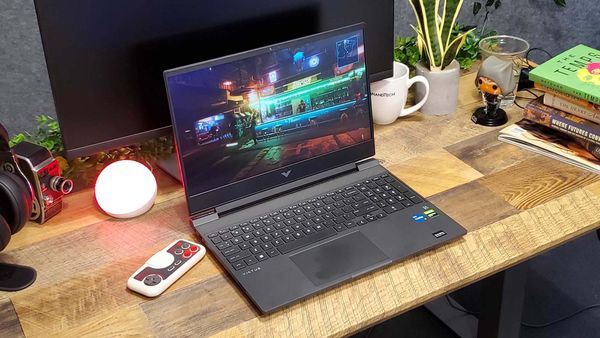
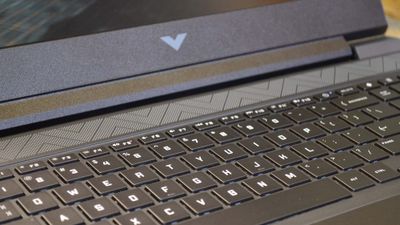
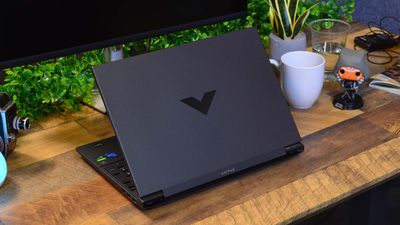

Specifications
Reasons to buy
Reasons to avoid
✅ You want a budget laptop with discrete GPU: Most budget laptops only have integrated graphics, which isn’t ideal for architecture students. This one boasts a dedicated GPU while still keeping costs relatively low.
✅ You like to play games after class: The HP Victus 15 is really designed as a cheap gaming laptop, and if you’re looking for a machine to pull double-duty, work and play, this is a good pick.
❌ You have a bigger budget: If your budget stretches a little further, you’ll get better specs from even slightly more expensive laptops.
❌ You want more memory: This laptop maxes out at 16GB - which is the minimum I’d recommend for running architecture software. However, it’s worth checking if your chosen model supports a RAM upgrade up to 64GB.
It might not look like a traditional gaming laptop, but that’s exactly what the HP Victus 15 is built for - gaming on a budget. The benefit for architecture students is that it means it also has the specs needed for class.
Performance, though, is great considering the cost - it’s good for gaming, although you may want to tweak your settings. And it can easily handle business and productivity tasks. I also love the fact that it includes a dual-fan system to cool the system, which is great if you’re studying architecture, since the software can be very resource-intensive.
We originally reviewed the model back in 2022, but the specs have since seen an upgrade making it much more suitable for design coursework.
Alright, there are a few compromises to keep the price down - notably, max RAM is 16GB, battery life capped out at 4.5 hours during our testing, and the screen is only 1080p. And, if I’m honest, the design is pretty standard (dare I say, dull). But for a laptop with a dedicated Nvidia GPU at this price, there’s a lot to recommend here.
Read our full HP Victus 15 review
Best 4K laptop for architecture students
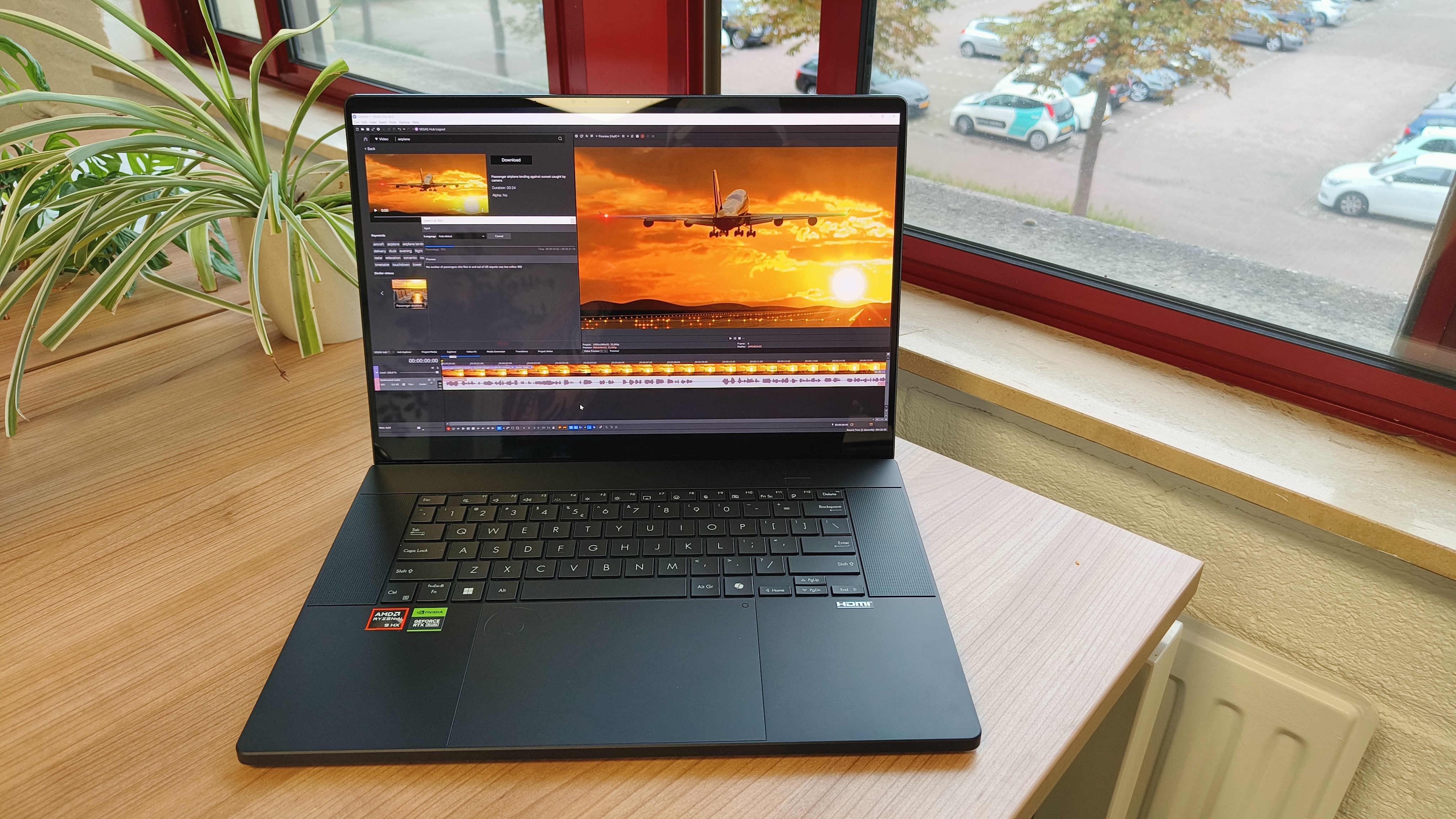
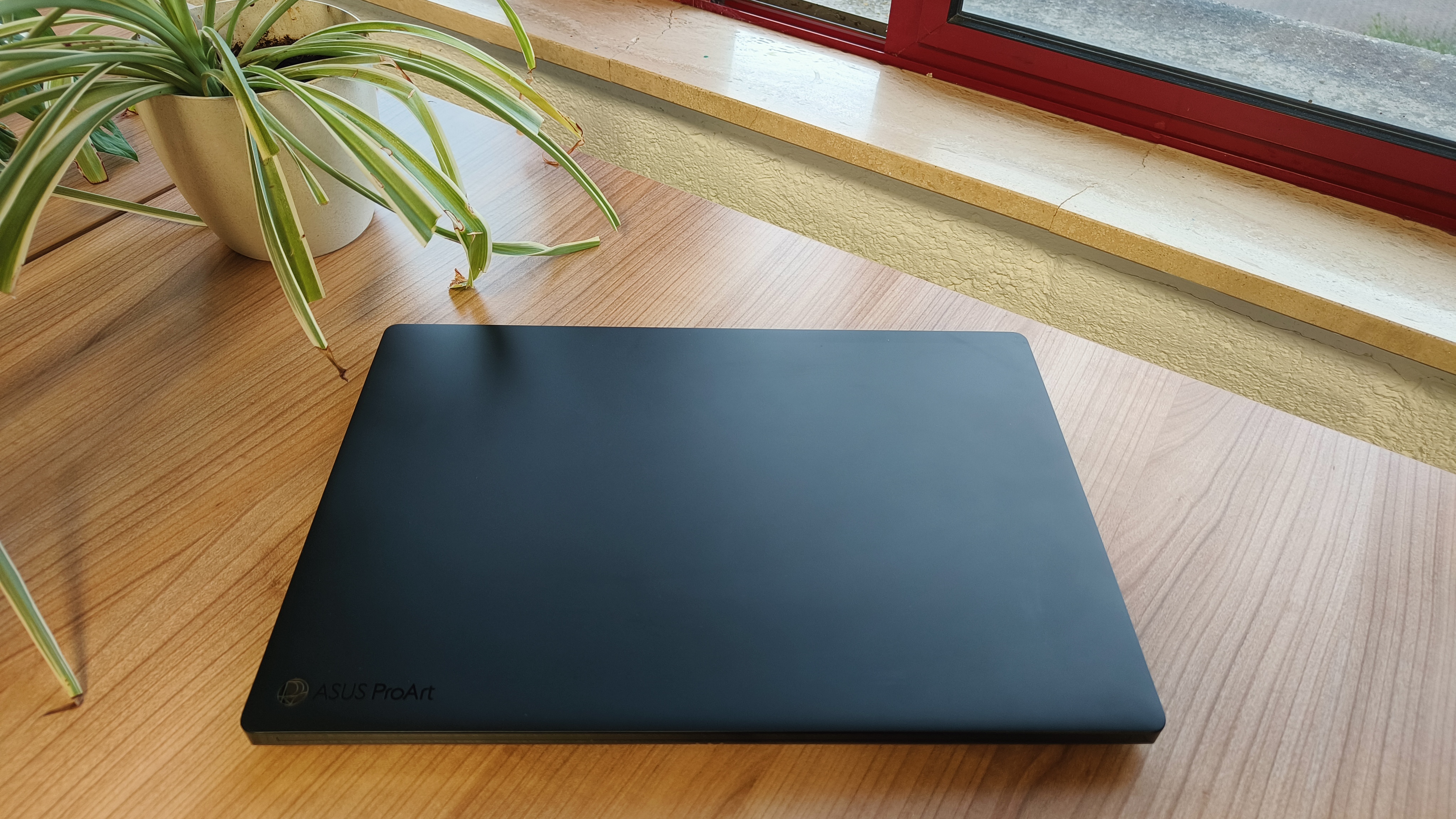
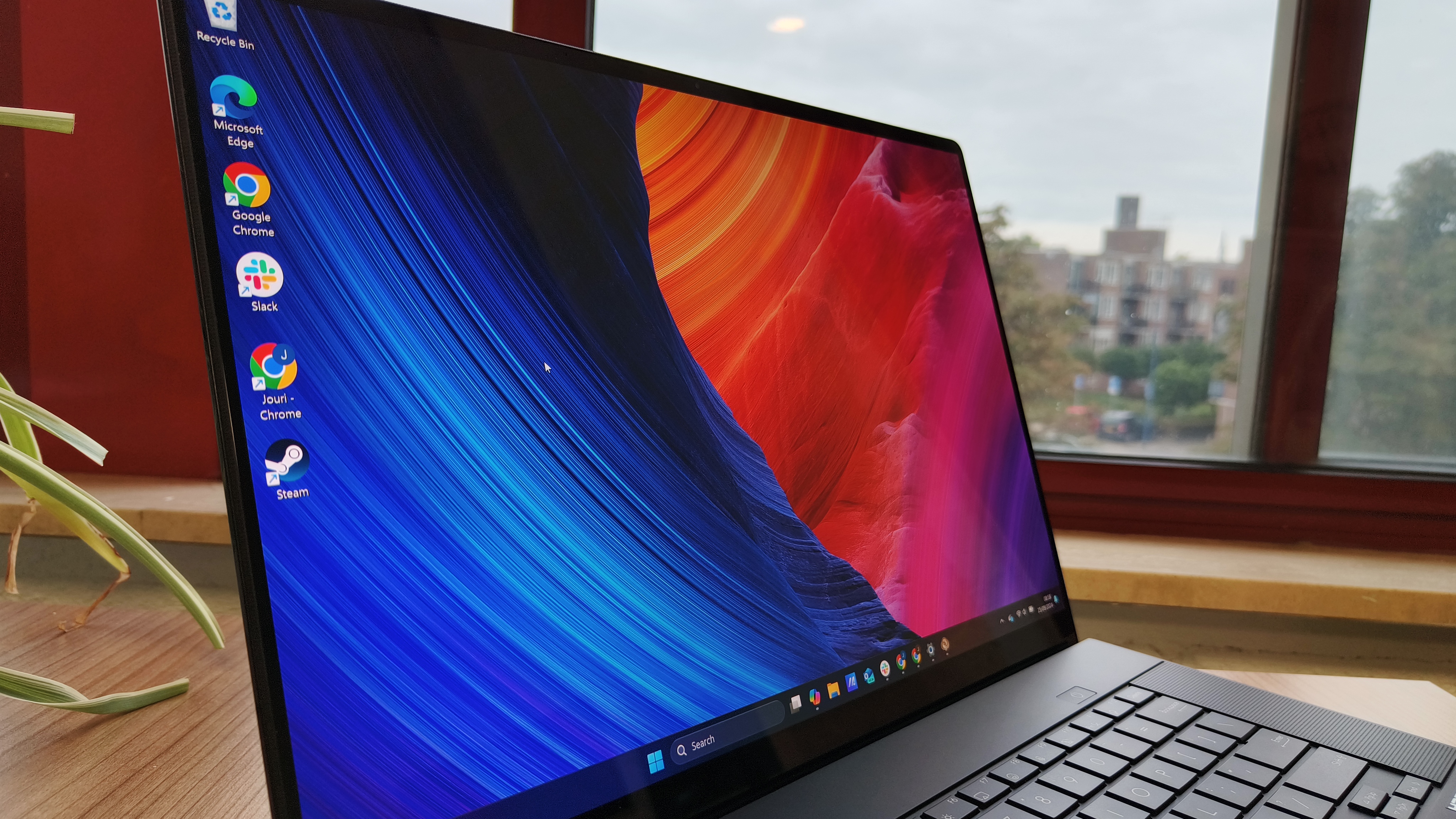
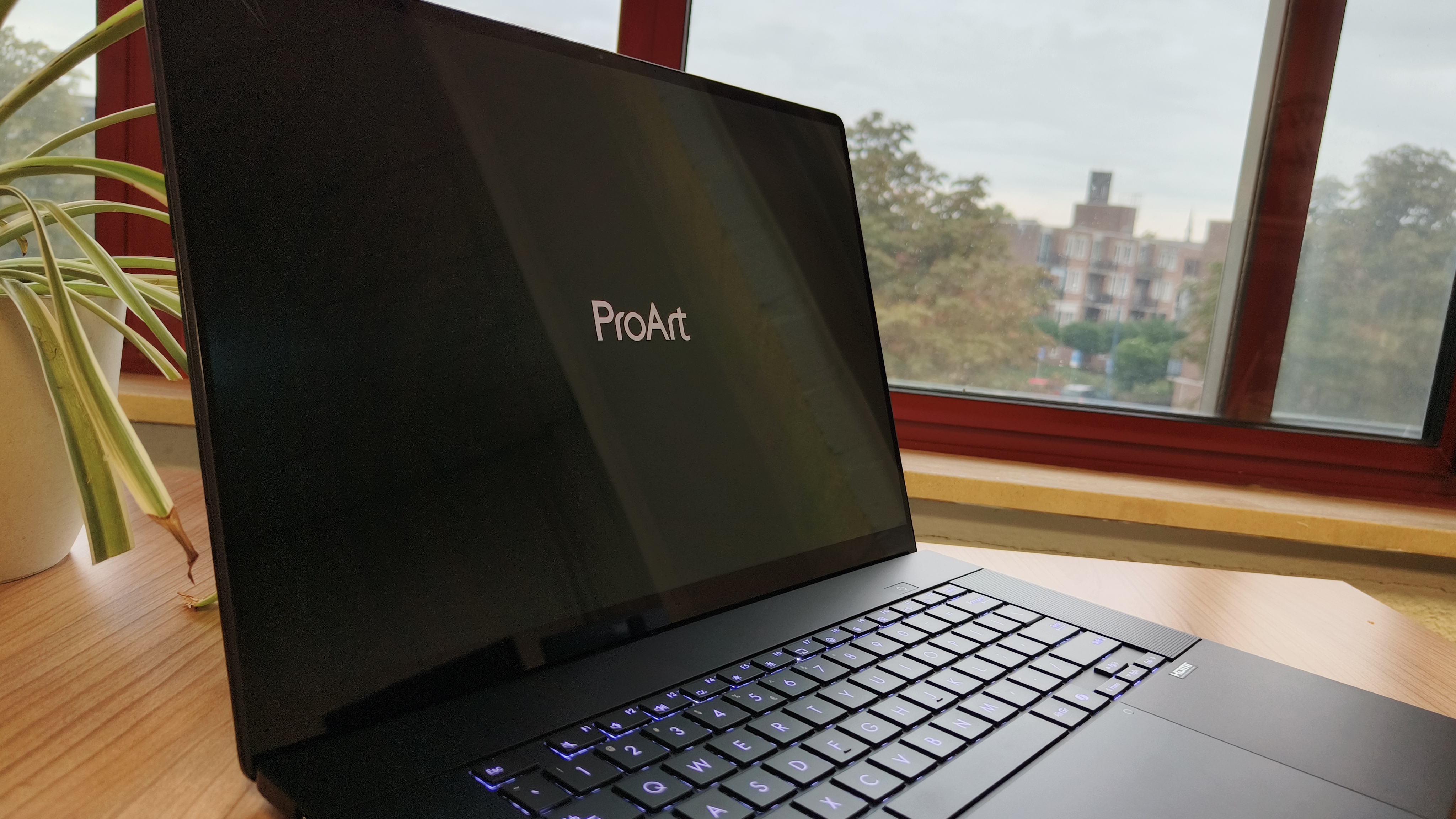
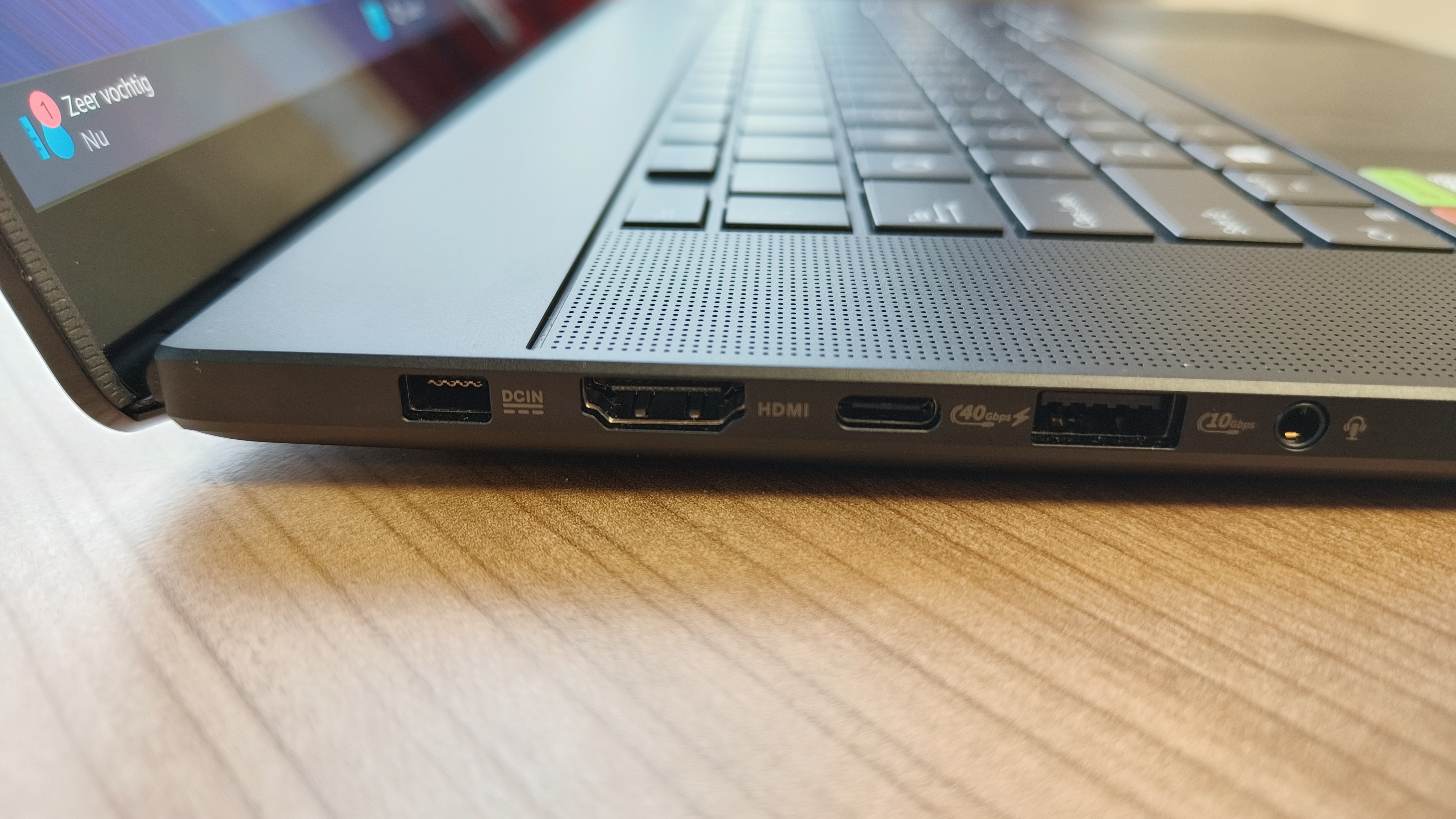

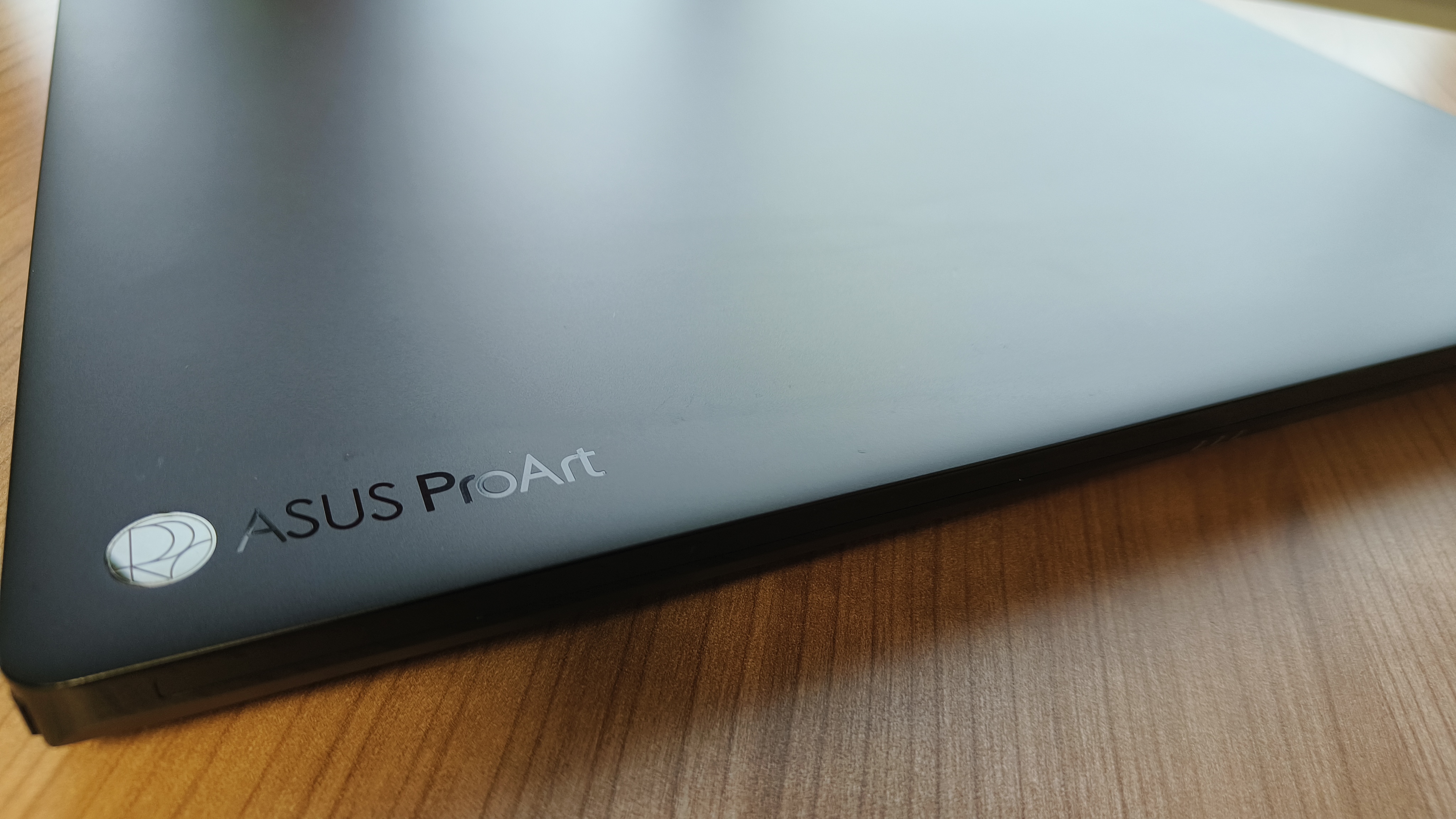
Specifications
Reasons to buy
Reasons to avoid
✅ You want a 4K display: One of the stand-out features of the ProArt P16 is its stunning 4K OLED screen, which in tests proved absolutely gorgeous.
✅ You want an alternative to a MacBook: If you use the Windows-only Revit, but want a laptop that rivals the MacBook Pro, this one capably fits the bill.
❌ You don’t need 4K: If you don’t need a 4K screen, you could probably get more bang for your buck elsewhere.
❌ You need a long-lasting battery: Unlike the MacBooks, which have literal all-day battery life, under our tests, this one lasts a little over an hour under heavy workloads.
Like the MacBook Pro, the Asus ProArt P16 is designed for creators and designers - and has the specs to prove it. And with that in mind, it means it’s ideally specced for architecture students, too. In our own testing, it showed excellent performance for heavy workloads like ultra-high-resolution video editing and rendering without any issues at all.
The design is very nice, feeling sturdy and durable (it meets the MIL-STD 810H military-grade standard) but still staying sleek and lightweight. And there are a good number of ports here, including Type 3 and Type 4 USB-C ports and HDMI for connecting a monitor to better view your models and renders. Elsewhere, you’ll find Harman Kardon speakers for improved audio - not essential for architecture work, but a welcome bonus.
But it’s the 4K OLED touchscreen screen with a 100% DCI-P3 color gamut and Pantone validation that will really catch the eye. It’s absolutely stunning, with picture quality coming across as crisp and vibrant. There’s even a stylus included in the box for more precise design-work.
It’s not a cheap laptop, and battery life could be longer (we got an hour and eighteen minutes during heavy editing loads). However, there’s little else to dislike about this machine - and for architecture students using Revit, which only works on Windows, it’s an excellent MacBook Pro alternative.
Read our full Asus ProArt P16 review
Best MacBook for architecture students
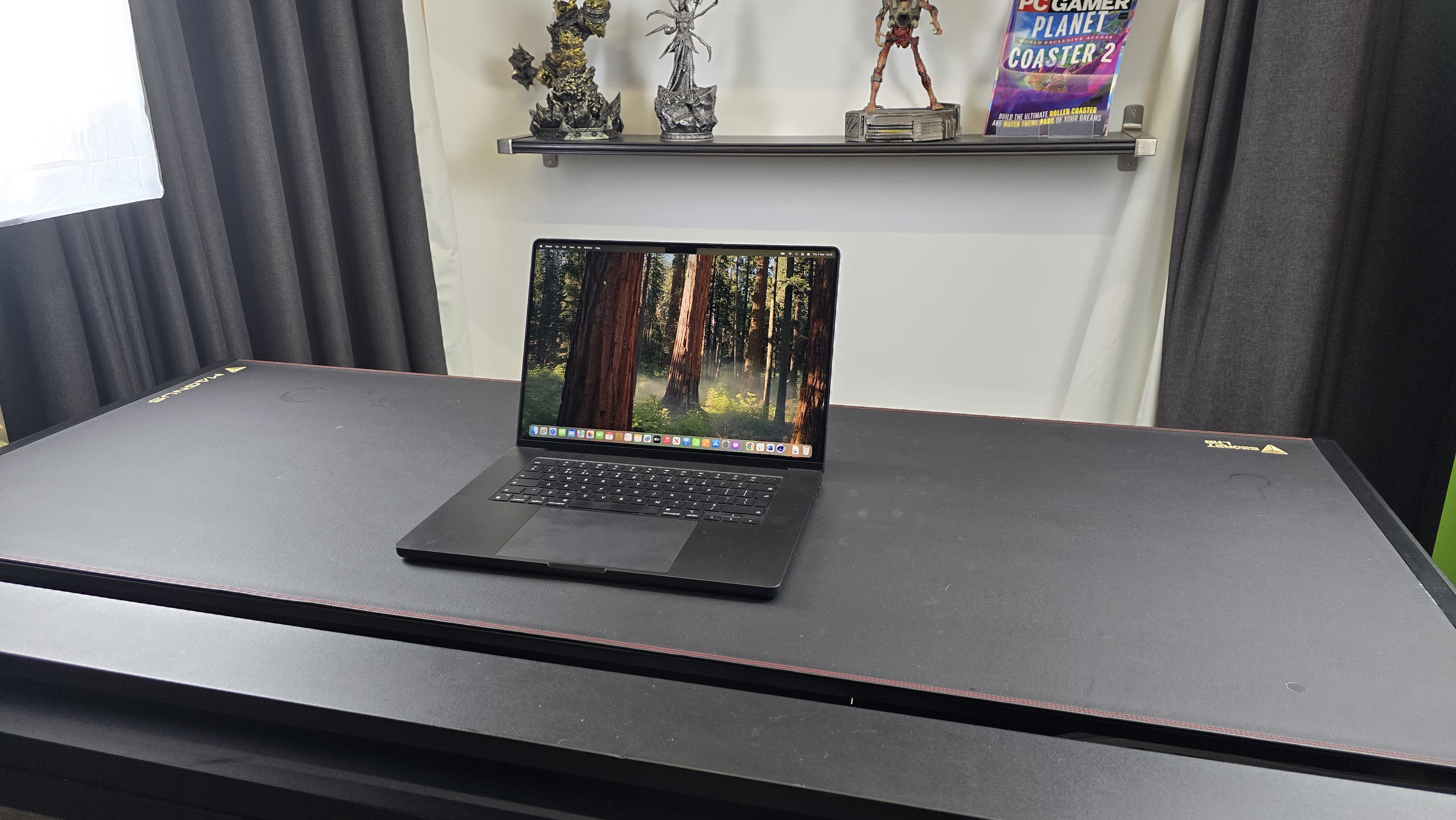

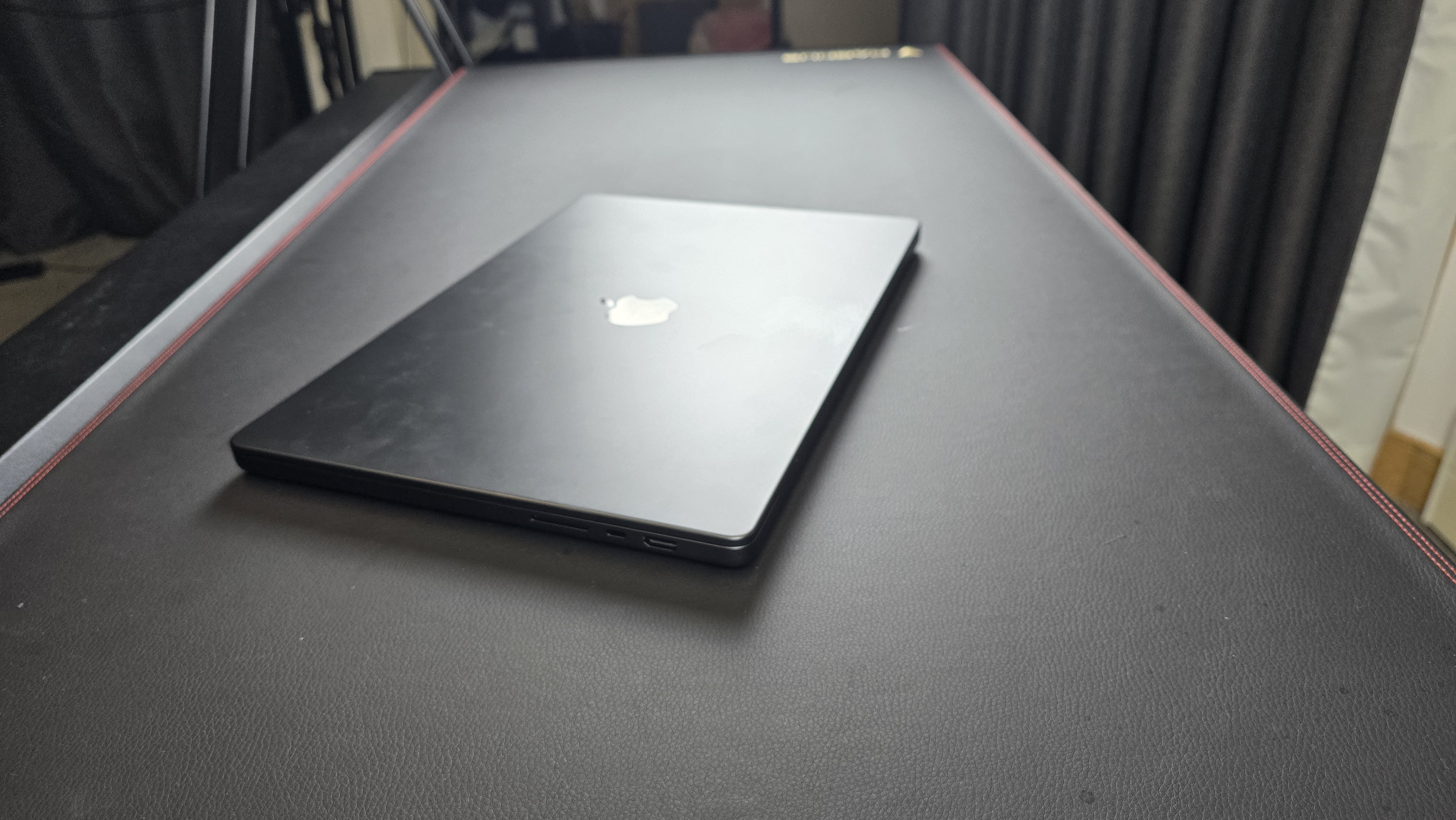
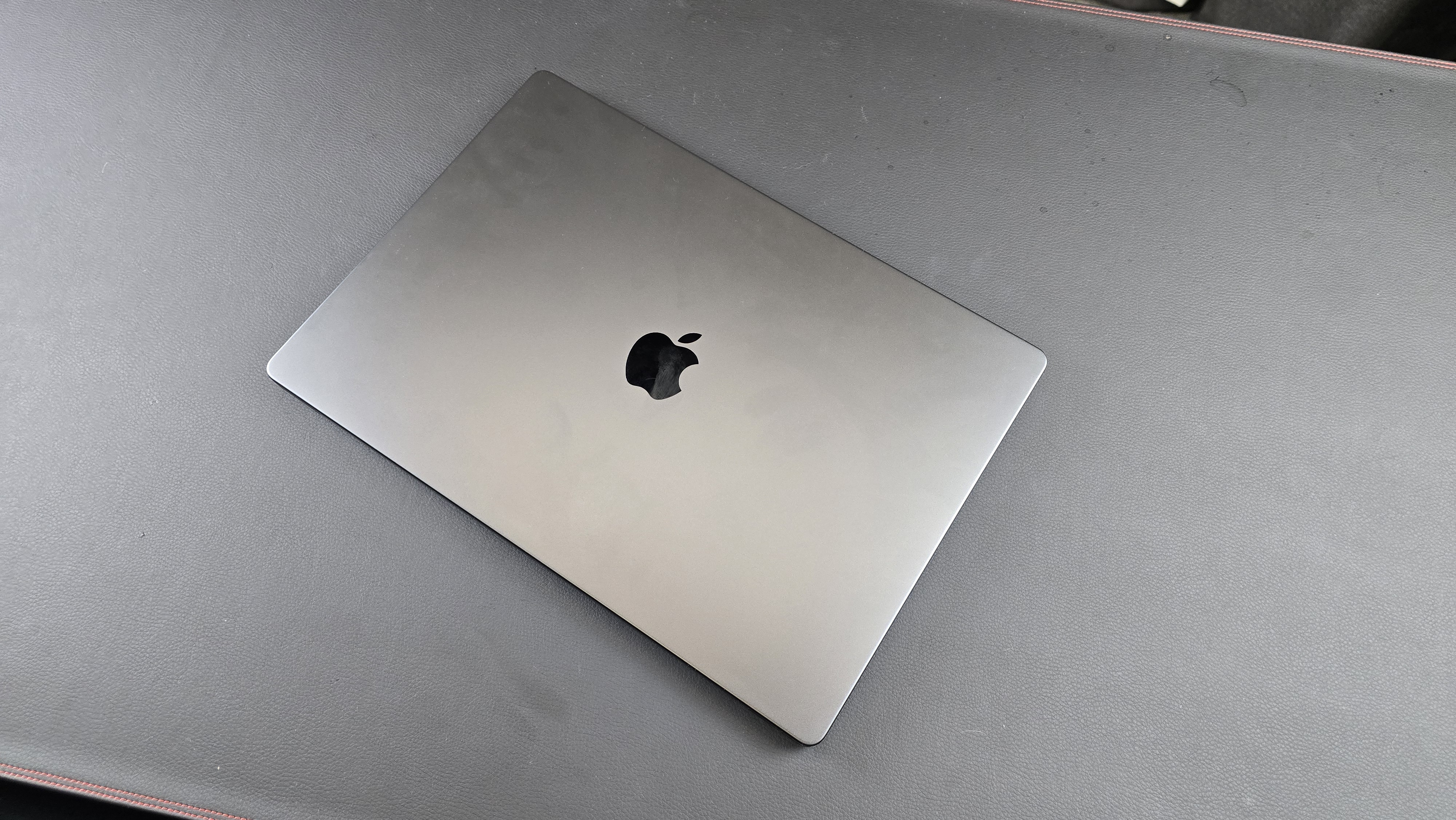
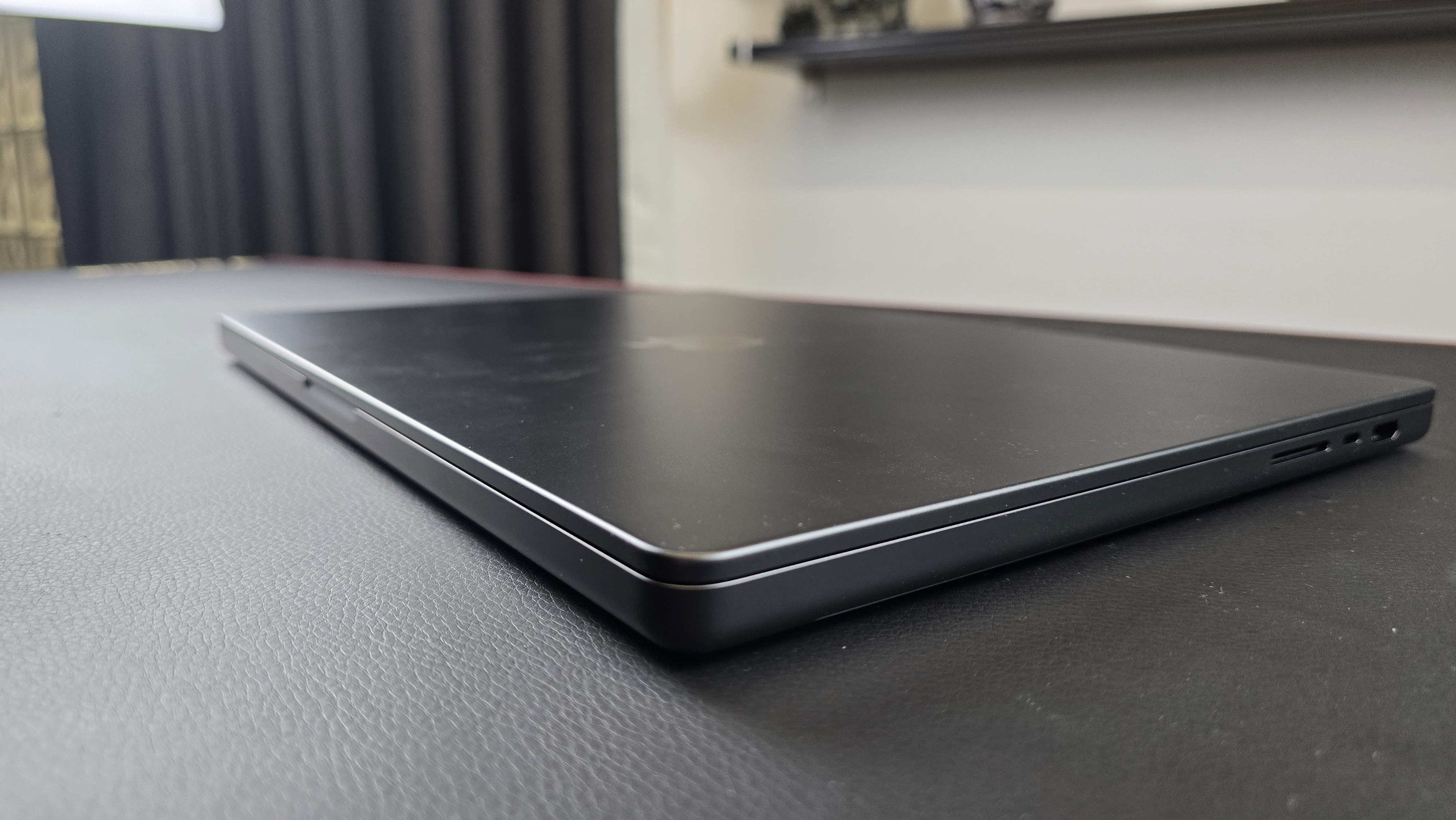
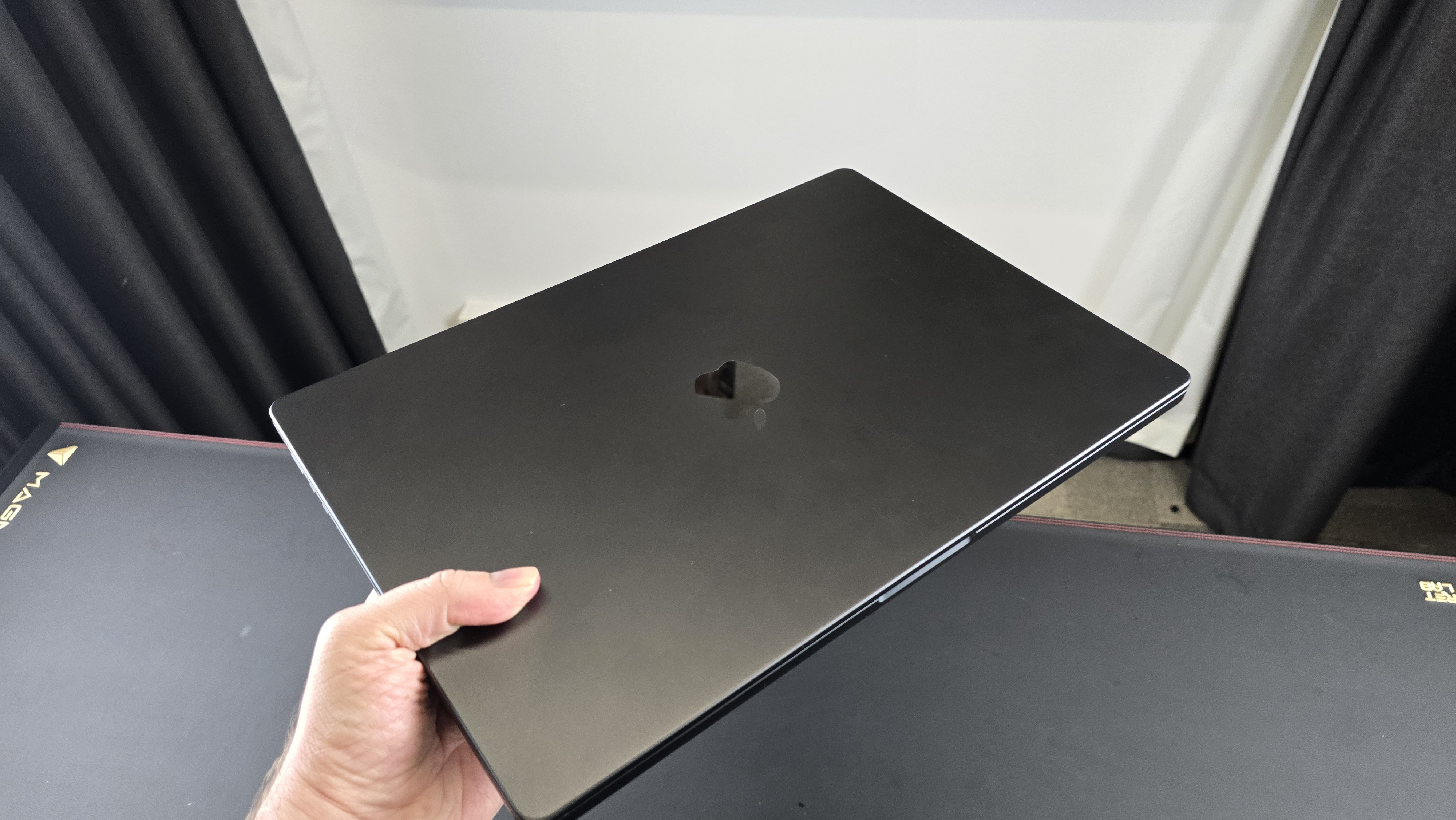

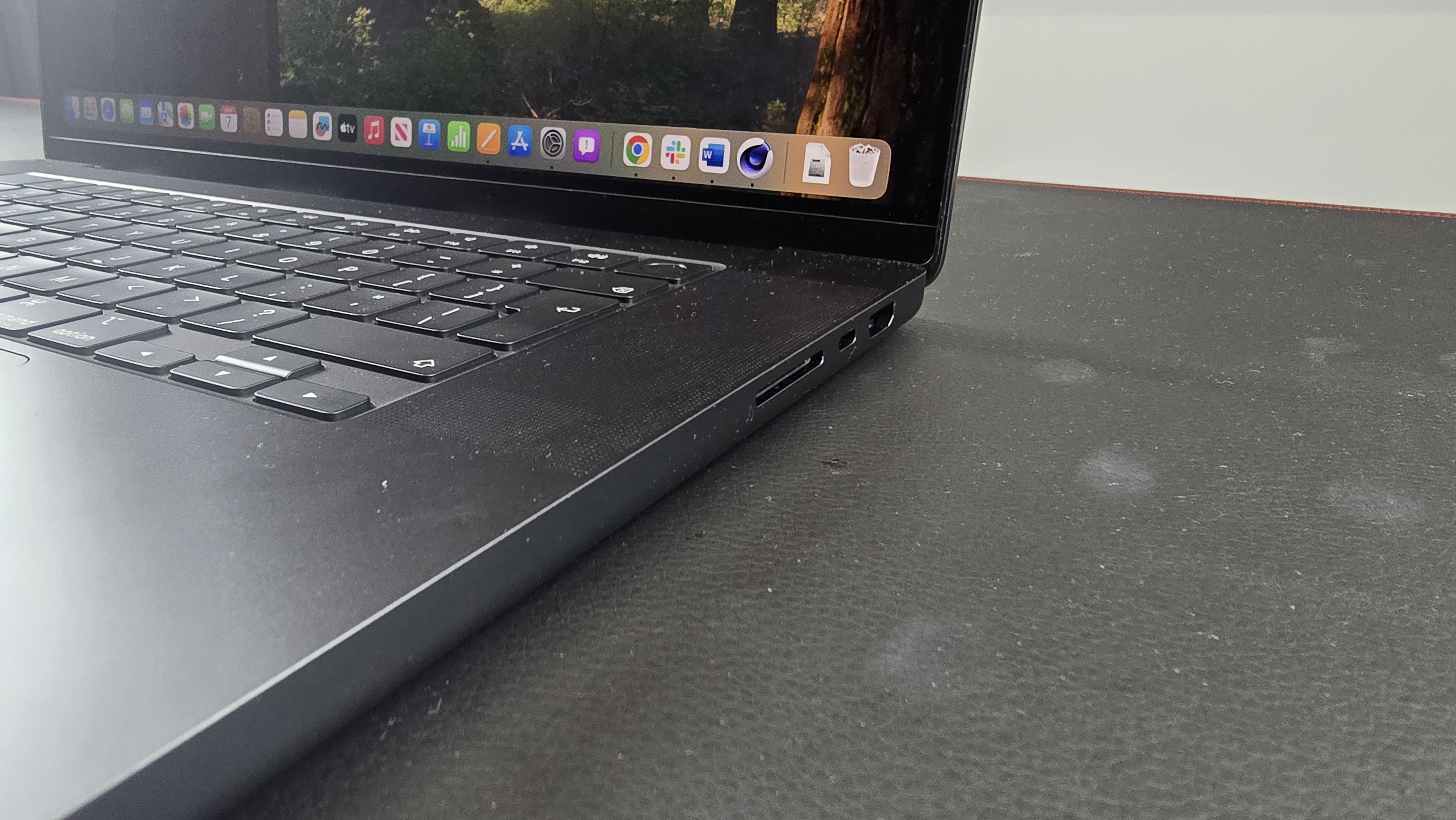
Specifications
Reasons to buy
Reasons to avoid
✅ You want best-in-class performance: In our tests, the M4 Pro-powered machine makes light work of heavy creative and design workloads.
✅ You want a stellar screen: While other laptops are catching up, in our experience the MacBook Pro’s Liquid Retina Display remains the best screen around.
❌ You use Revit: Not all architecture students will use Revit, but for those that do, an APple machine is out of the question as the software is Windows-only.
❌ Your course recommends Windows: Even without Revit, a lot of schools and universities recommend Windows machines for full compatibility with the software you use.
Armed with the M4 Pro or M4 Max chip, the MacBook Pro is a real beast when it comes to performance. Like the ProArt P16, it’s built for professional-level design and creative work, making short work of editing, rendering, and CAD.
But - and it’s a big but - you’ll want to check if the software you’ll be using on your course supports macOS. Software like Revit, for example, only works on Windows laptops, rendering the MacBook Pro functionally useless for some architecture classes. I recommend checking with your school or university before committing.
If you can use it on your course, you’ll find an incredibly powerful laptop that should have no trouble running the likes of AutoCAD, and staying whisper-quiet as it does. We certainly walked away heavily impressed with what this laptop was capable of during our tests. What really stands out to me is the battery life, which clocked in at over twenty-one hours in our review. Talk about taking ‘all-day life’ literally.
As is expected from Apple, the price-point is pretty high, so it’s not ideal for those on a budget, and we didn’t see excessive improvements compared to the older M3 Pro models, so I wouldn’t recommend upgrading if you’ve got an older version. But if you want the best Apple has to offer for class, this has to be it.
Read our full Apple MacBook Pro 16in (M4 Pro) review
Best laptop for architecture students and gamers
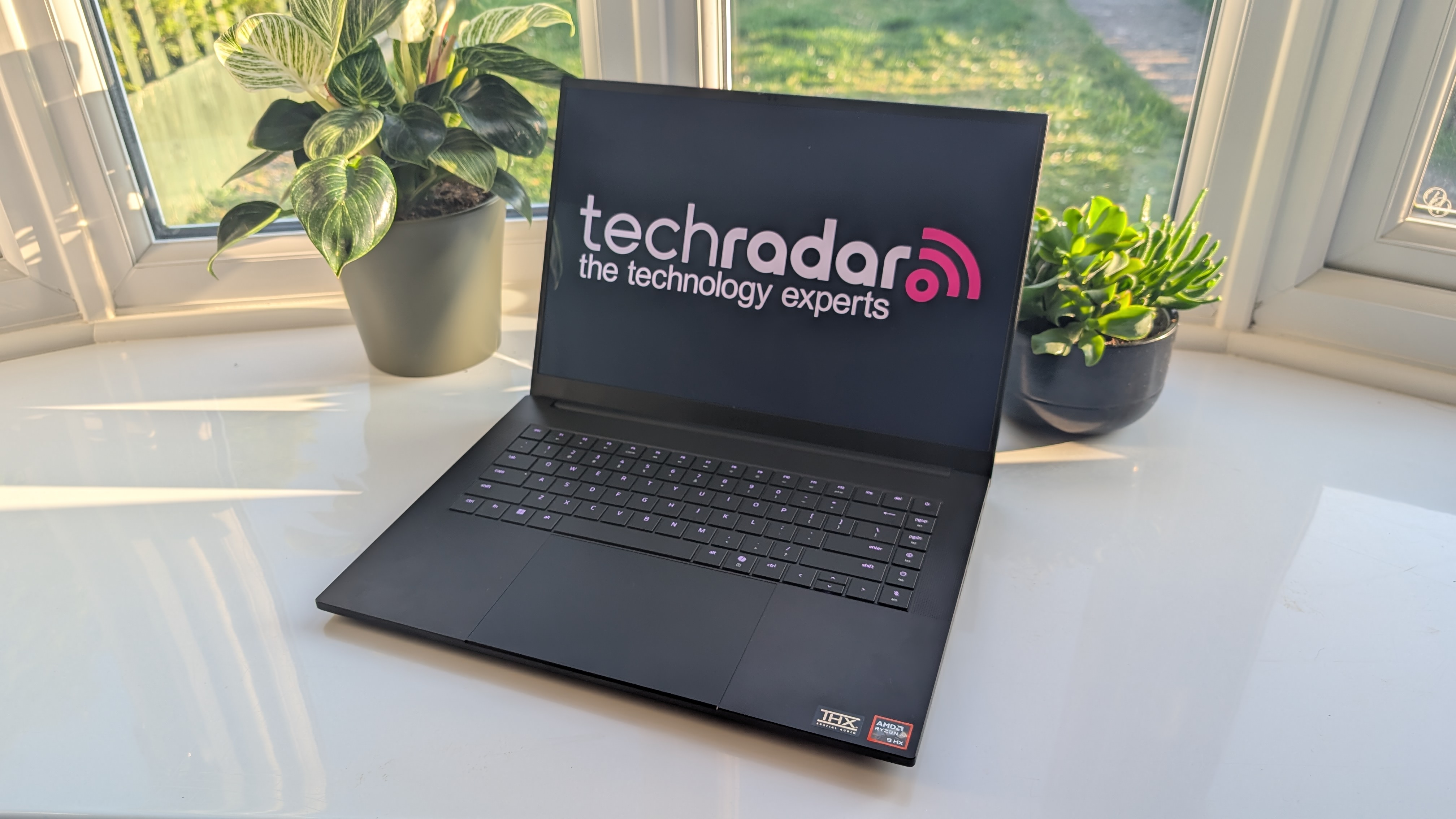
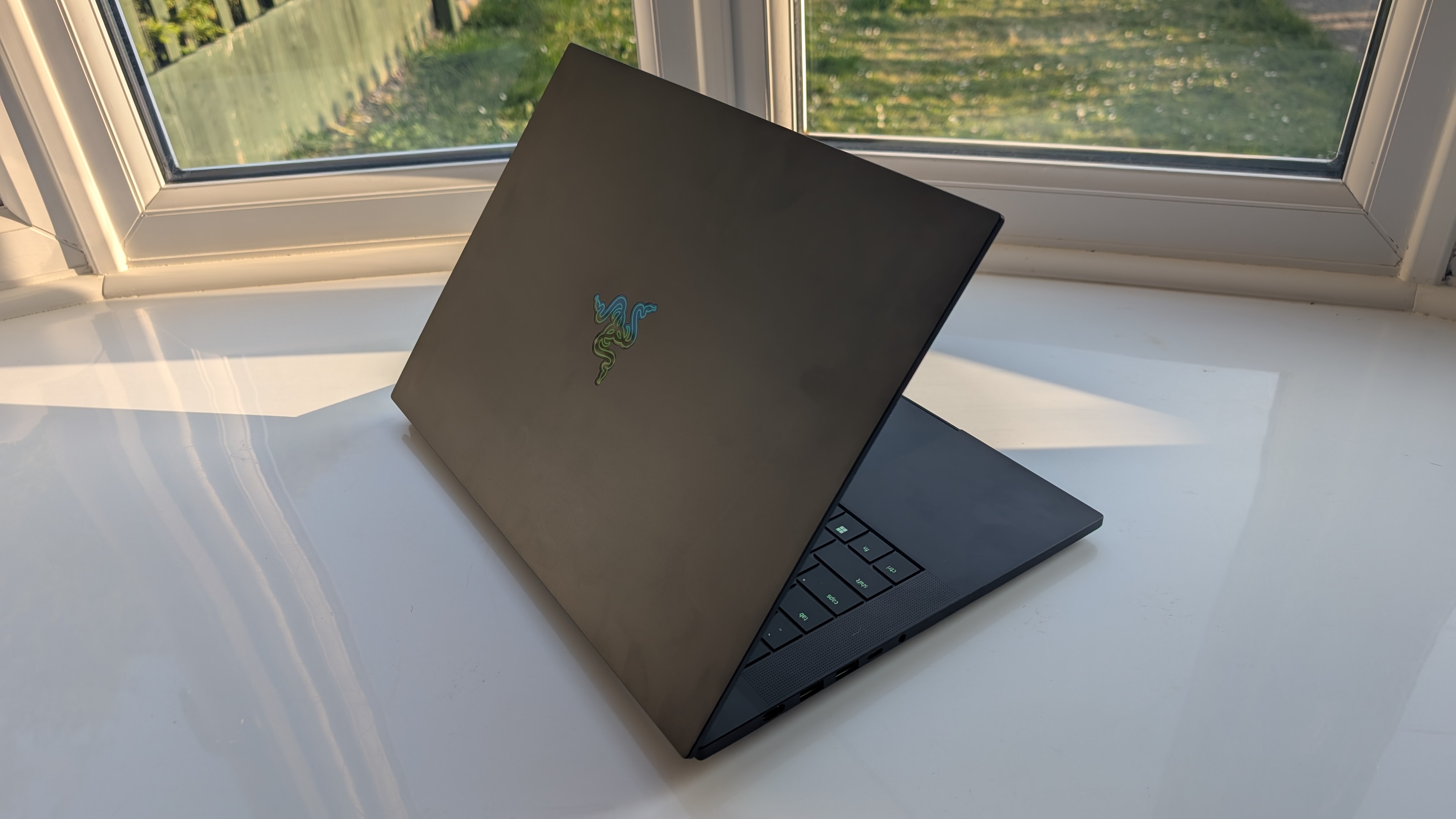

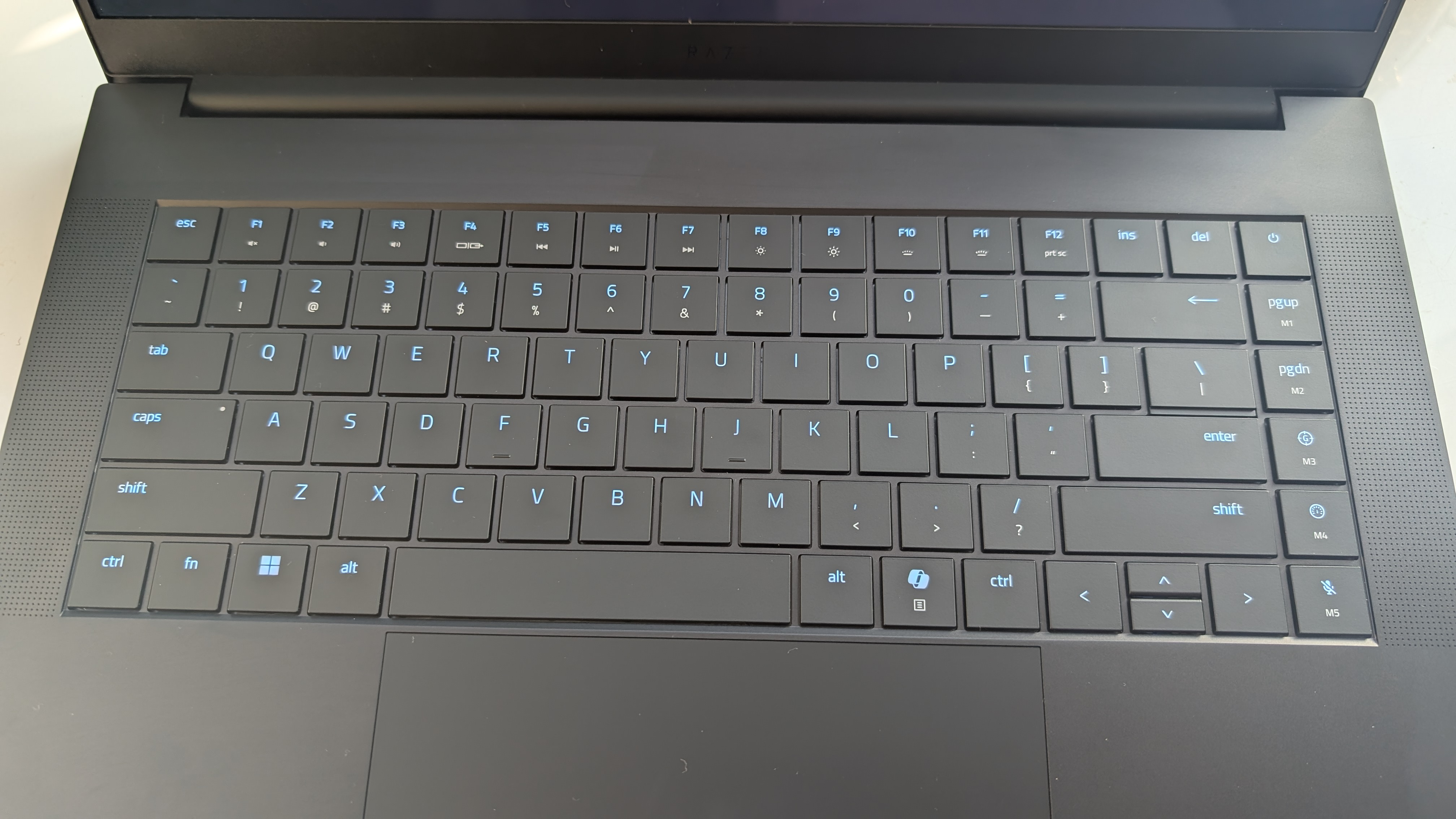
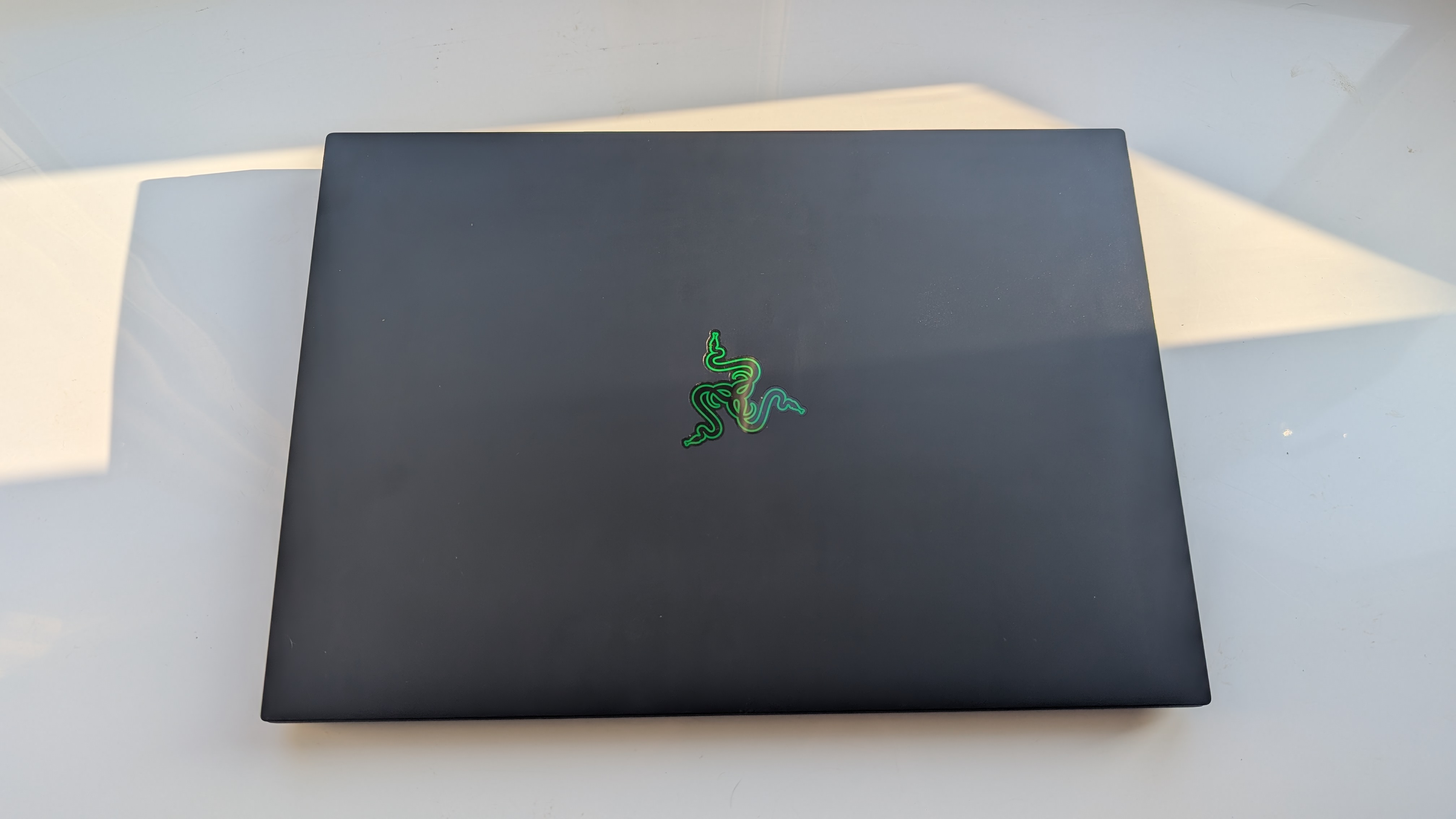
Specifications
Reasons to buy
Reasons to avoid
✅ You want a laptop for studying and gaming: Built for gaming, we found the Razer Blade 16 one of the best we’ve ever tested.
✅ You want a thin but powerful machine: 2025 saw the release of the thinnest Razer Blade 16 yet, making it a good pick for portability.
❌ You don’t play games: For the cost, you can get a decent workstation that, while capable of playing games, isn’t specced around gaming.
❌ You need a 4K display: Unlike previous models, the newest laptop line-up maxes out at 2.5K resolution, rather than 4K.
For any students looking for a laptop that can pull double-duty on gaming and running architecture software, the Razer Blade 16 ticks all the boxes. It’s packing a AMD Ryzen AI 9 HX 370 processor, up to 64GB RAM, and even the base model’s Nvidia RTX 5070 Ti graphics card will easily cut through coursework.
In our tests, it delivered best-in-class performance, strong in both real-world and synthetic benchmarking. We also measured battery life at two and a half hours while gaming and seven and a half hours in our web browsing tests.
Like older versions, this is a robustly built laptop with a premium feel thanks to the anodized metal chassis, but it has seen some notable upgrades. It’s lighter and slimmer than before, with a redesigned keyboard for a more comfortable typing experience. So, it’s a whole lot more portable for anyone looking to carry this across campus.
Annoyingly, there’s no 4K version here, as there was with previous models of the Blade 16, but the 2.5K resolution is more than enough for work and play. And we found the display was still lovely to look at, boasting OLED and a 240Hz refresh rate.
If you’re not specifically looking for a gaming laptop, you’ll get more for your money with a mobile workstation that isn’t specced around playing games. If you want a beautiful, well-built machine that’s more than ready to tackle your architecture course and still get use in your downtime, it’s ideal.
Read our full Razer Blade 16 (2025) review
Best 17in laptop for architecture students
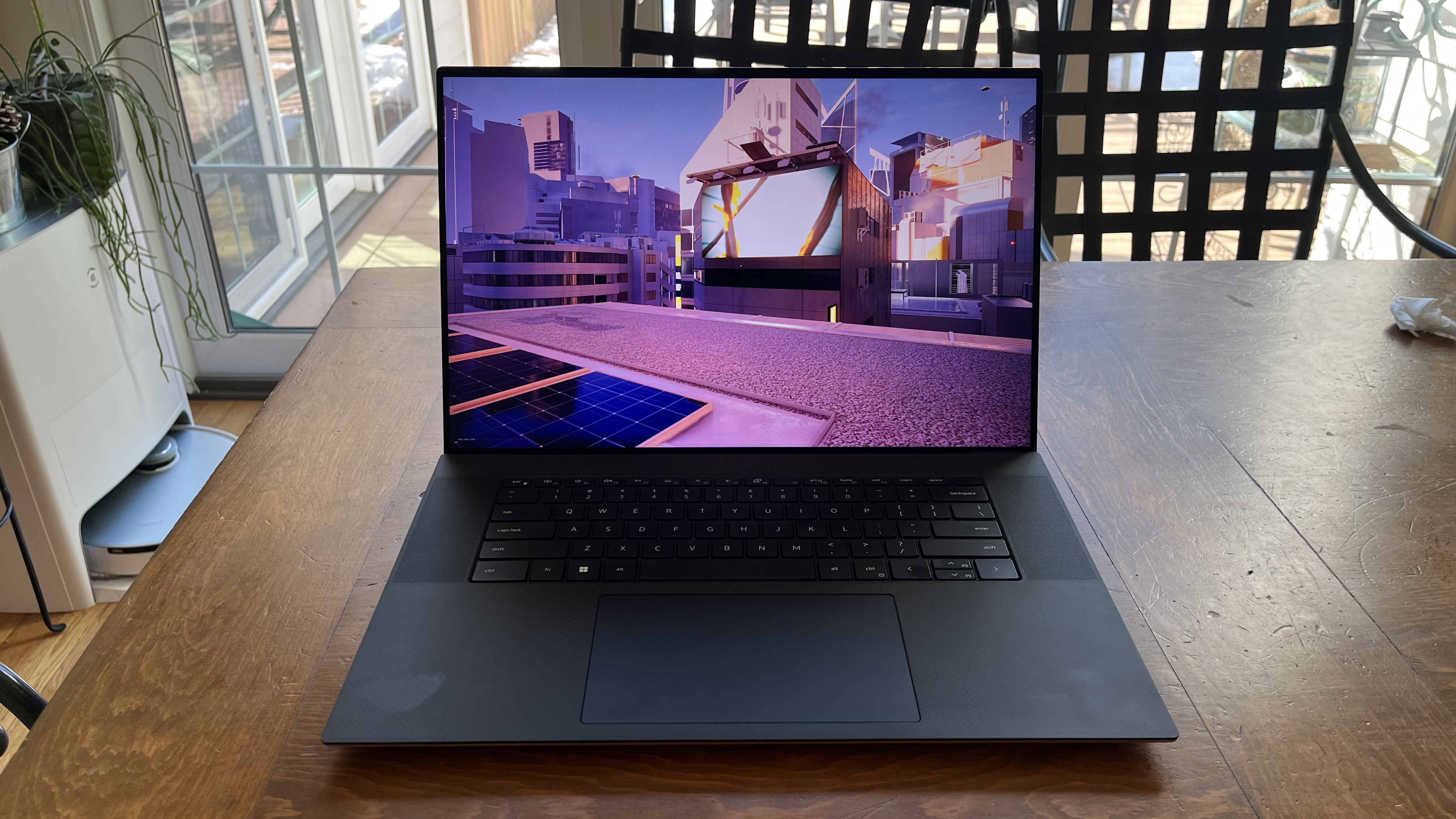
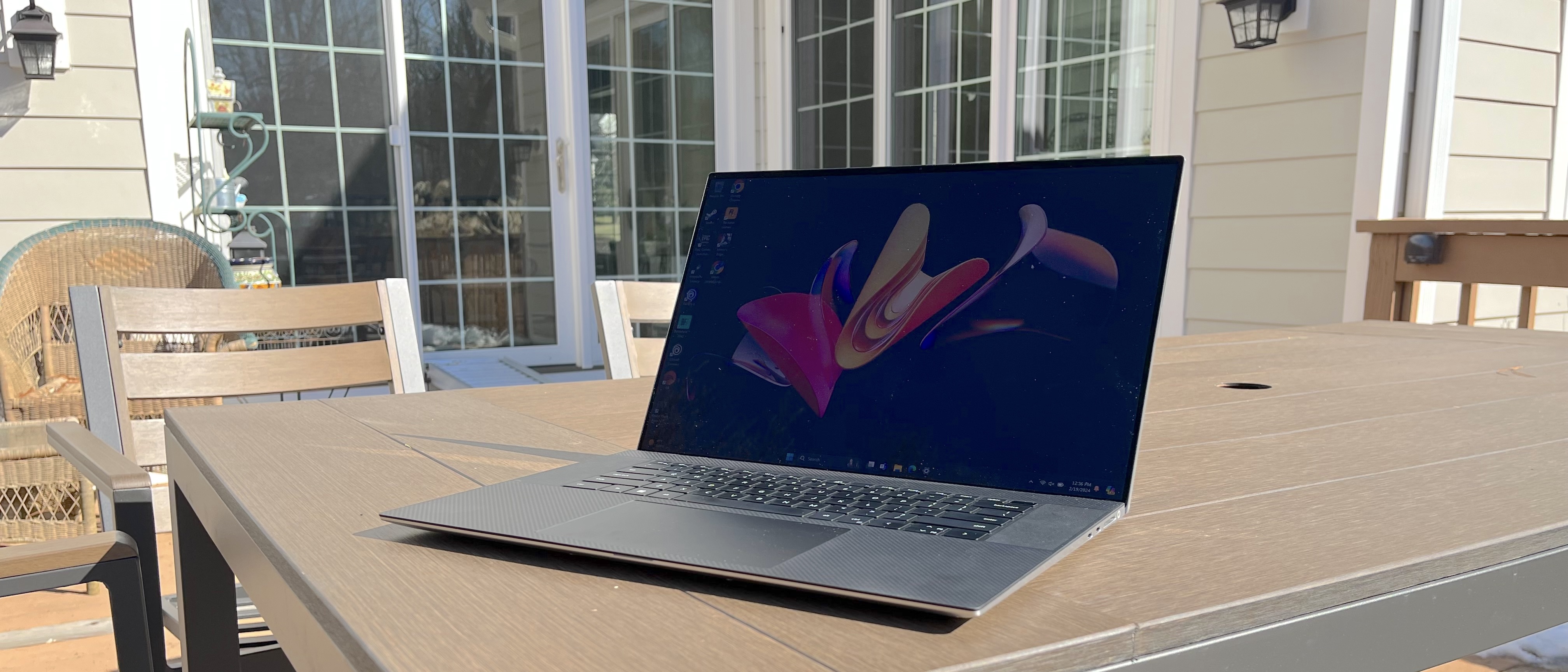


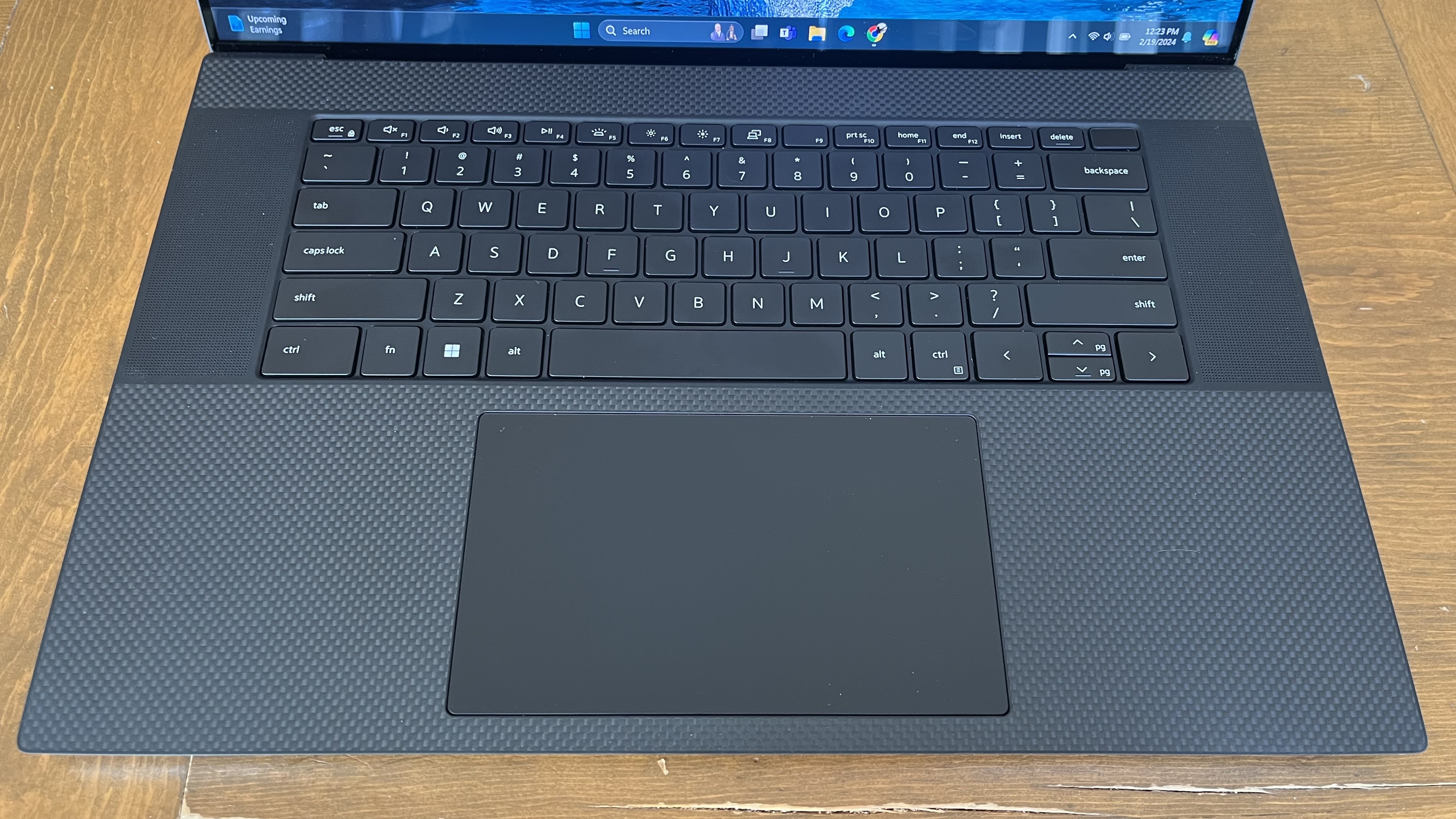
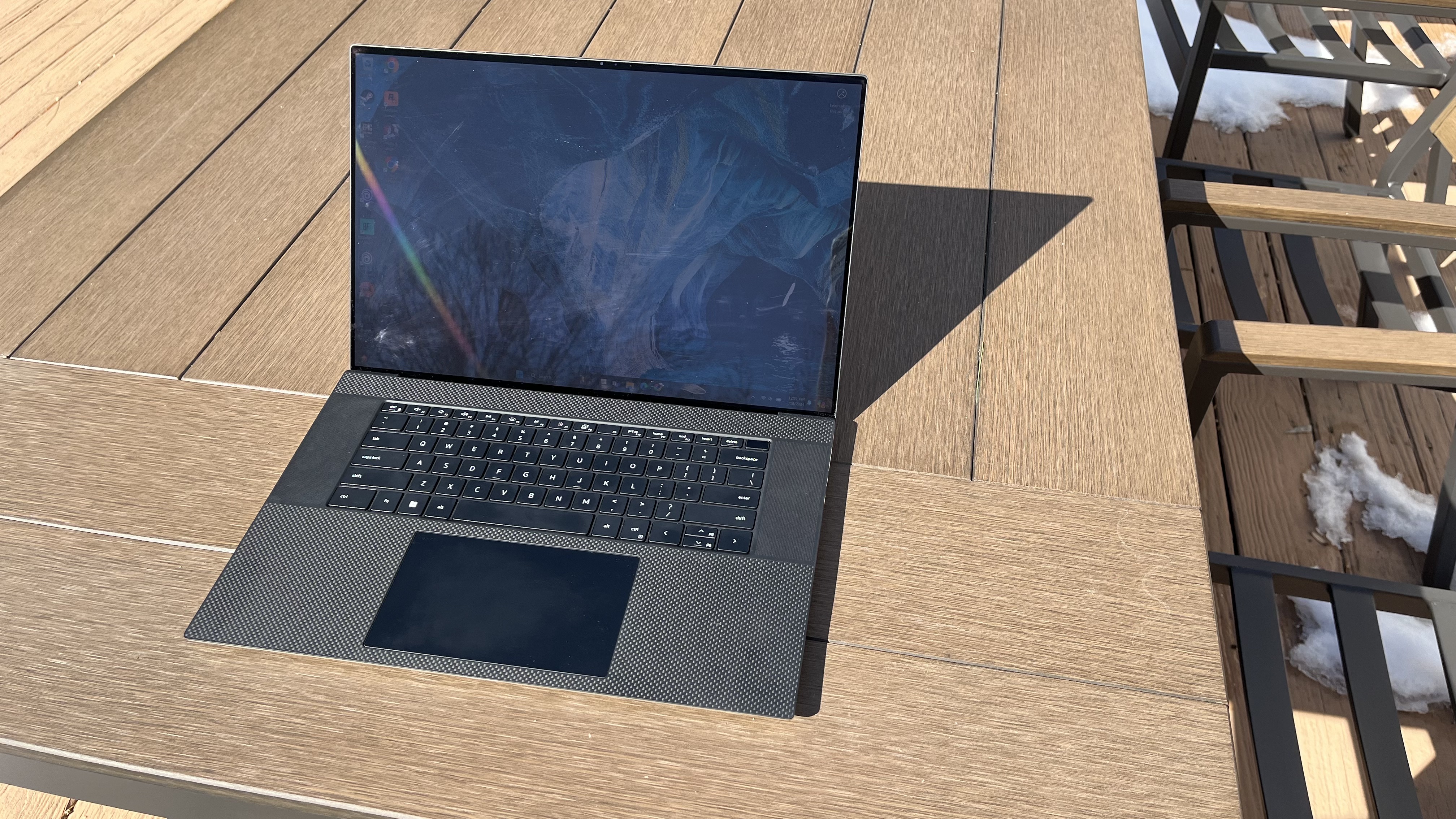
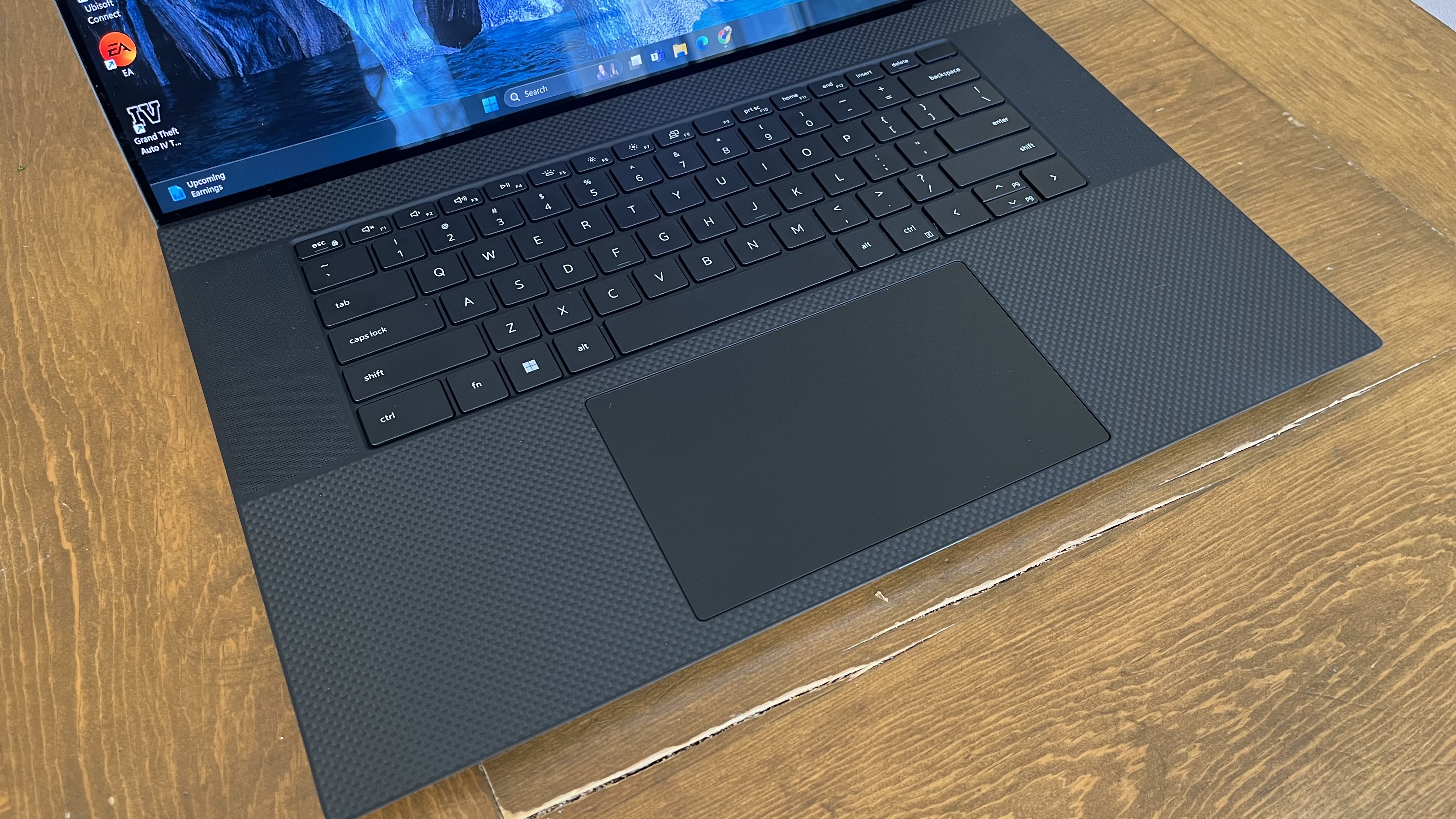


Specifications
Reasons to buy
Reasons to avoid
✅ You want a broad 4K screen: At 17.3-inches, this laptop has a glorious display that offers a broad canvas for architecture work, with 4K clarity.
✅ You want a versatile laptop: The XPS line-up is Dell’s professional range, so it’s more than capable of handling everything from design to productivity tasks.
❌ You need something more portable: As a 17in laptop, this isn’t the most portable laptop you can get for taking around campus - although it’s still nicely balanced for its size.
❌ You don’t want 4K: If you can get away with no 4K, there are a lot of other laptops out there that will deliver similar performance without the cost.
The Dell XPS 17 is without a doubt one of the best laptops around for a whole range of uses - from office work and video editing to running architecture software. If you want a professional machine that’s designed for versatility, with some excellent specs under the hood, and a beautiful 4K display, there’s not much that can compete.
We were very impressed with performance during our tests, where the laptop offered powerhouse performance, where it maxes out on an Intel Core i9 processor, up to 64GB of RAM, and an Nvidia 4080 GPU. The display looks great, with 4K detail in the 16:10 aspect ratio, and color coverage is superb.
Port selection could be better, and battery life isn’t too bad, it’ll certainly last all day if you’re not pushing it too hard, lasting around nine hours on a single charge during our tests. Nor is it especially portable - no surprise given its size, it’s relatively heavy, and I’d recommend it, like many in this round-up, for set-ups in one or two locations, rather than hopping from workspace to workspace all-day long.
For general tasks, it may offer more power than needed, but that’s exactly what I’m looking for in a laptop for architecture students, and it’s otherwise, it’s all wrapped up in an elegant silver chassis.
Read our full Dell XPS 17 review
Best 18in laptop for architecture students

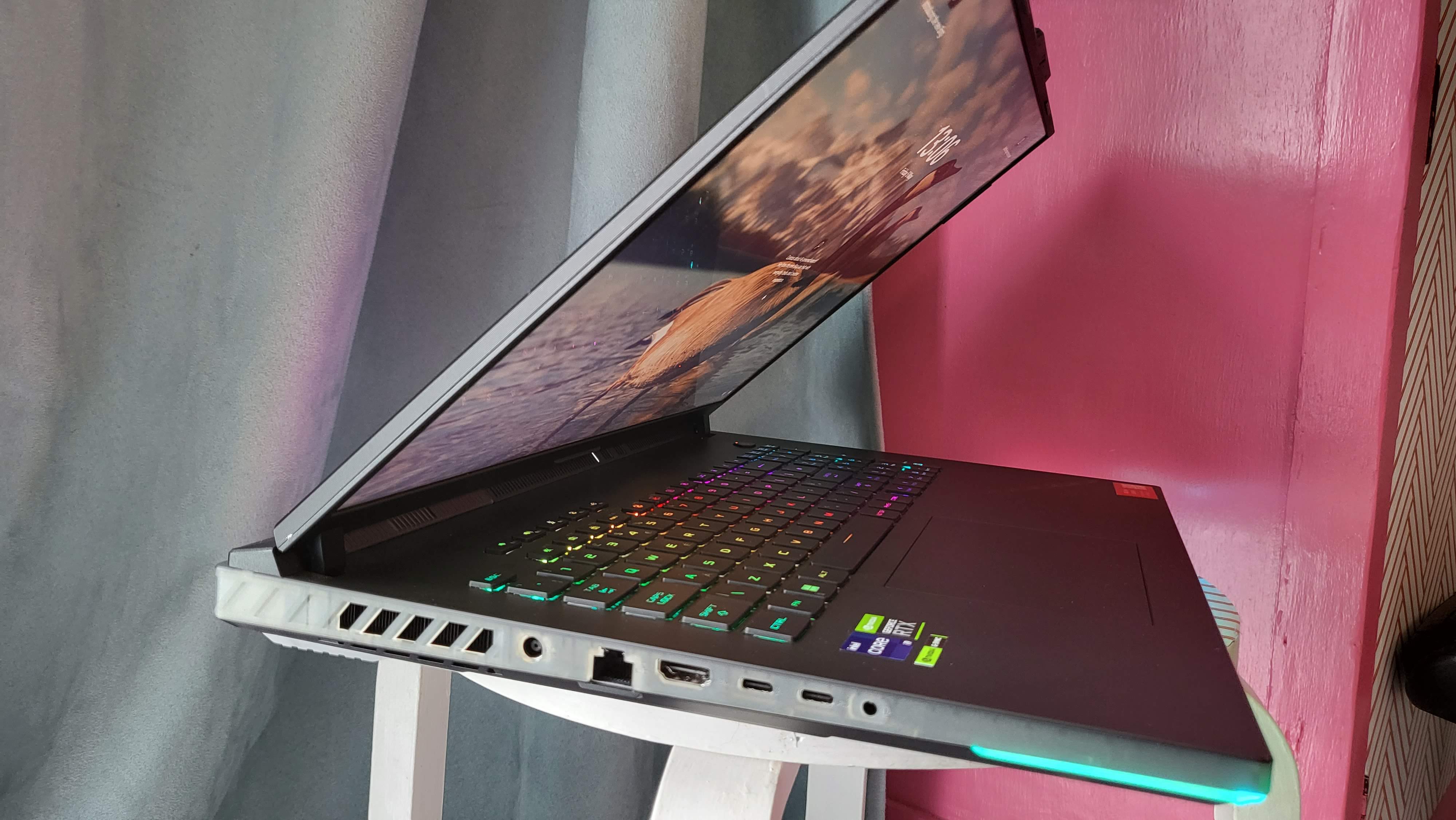
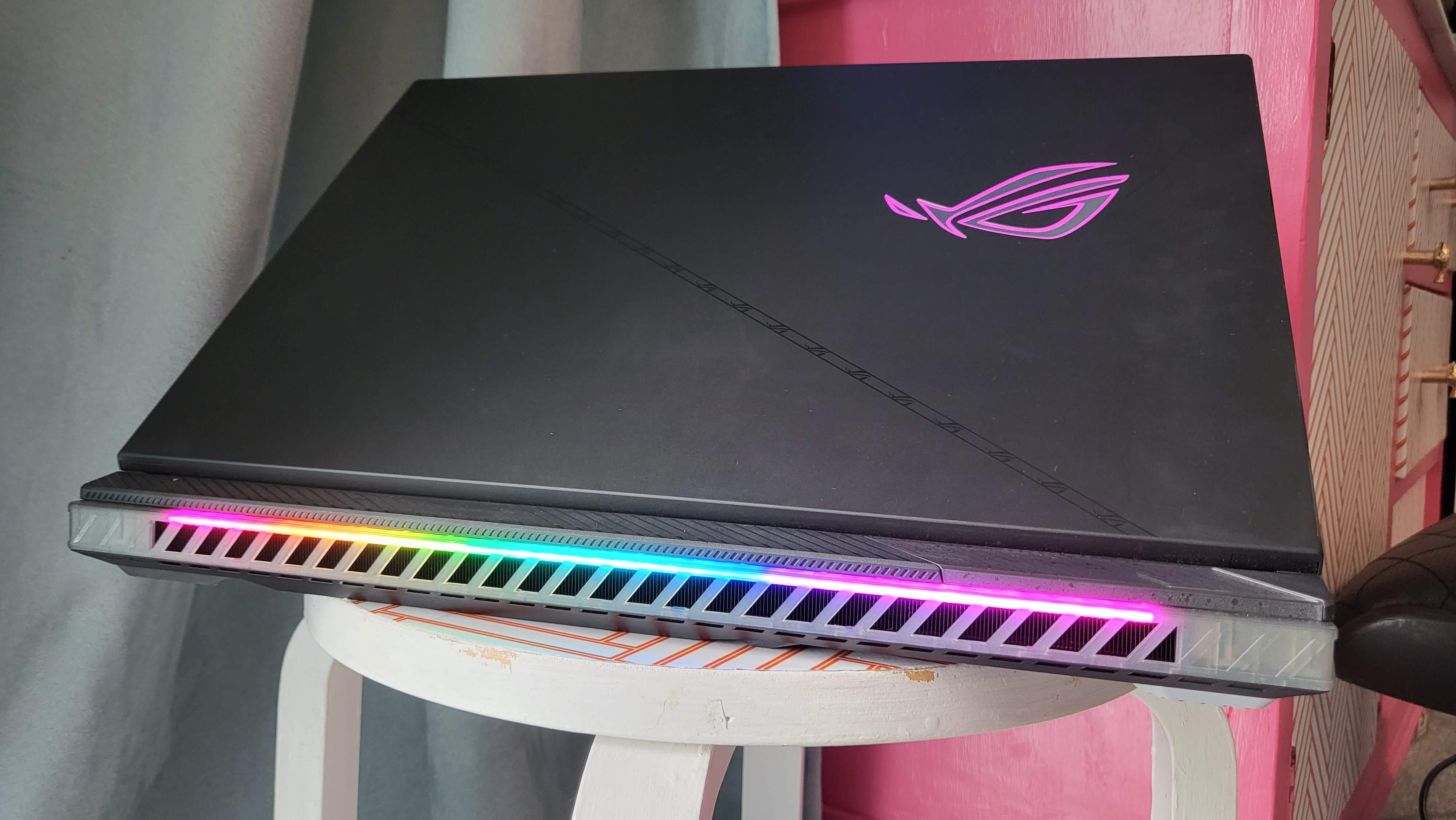

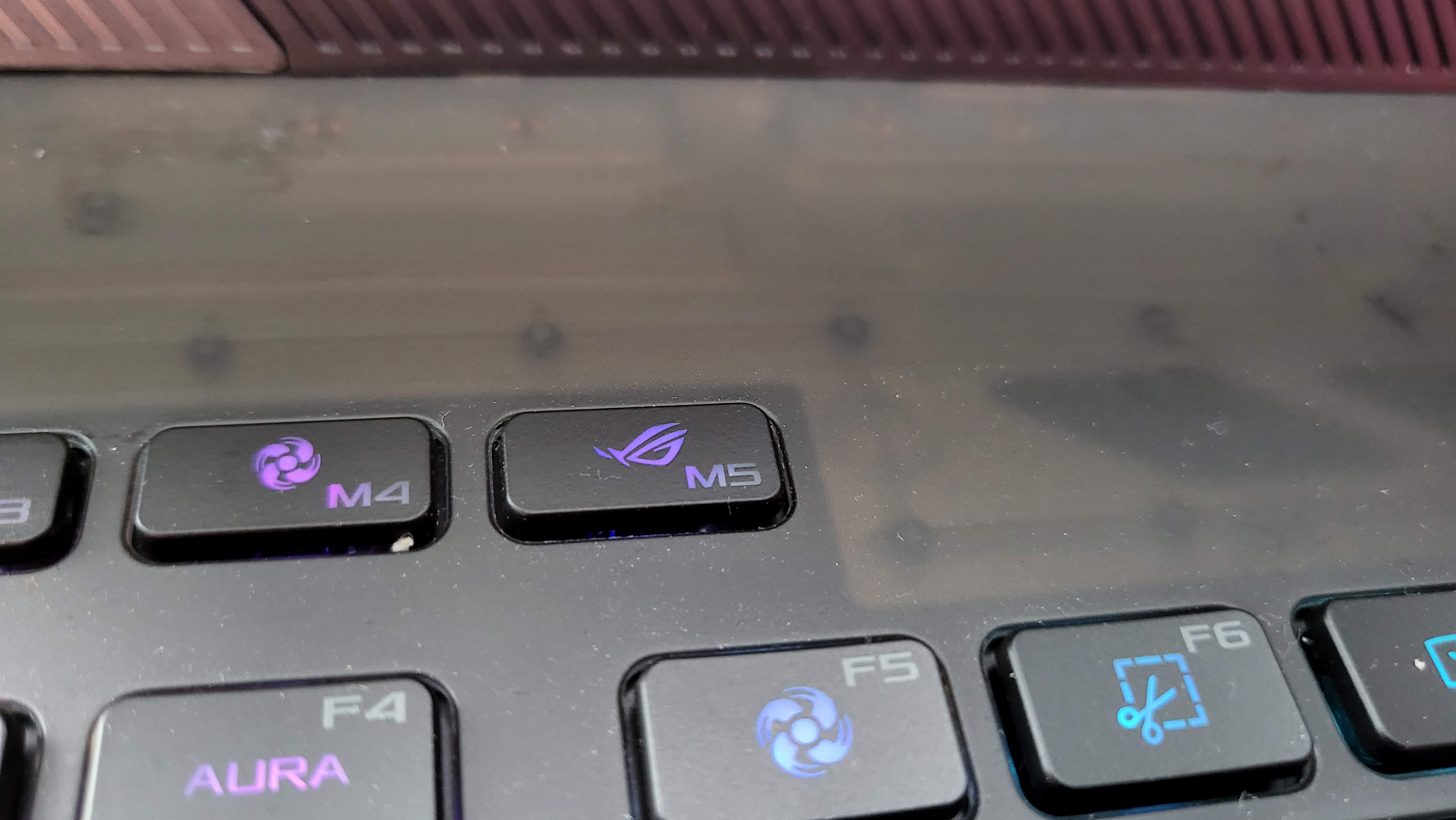
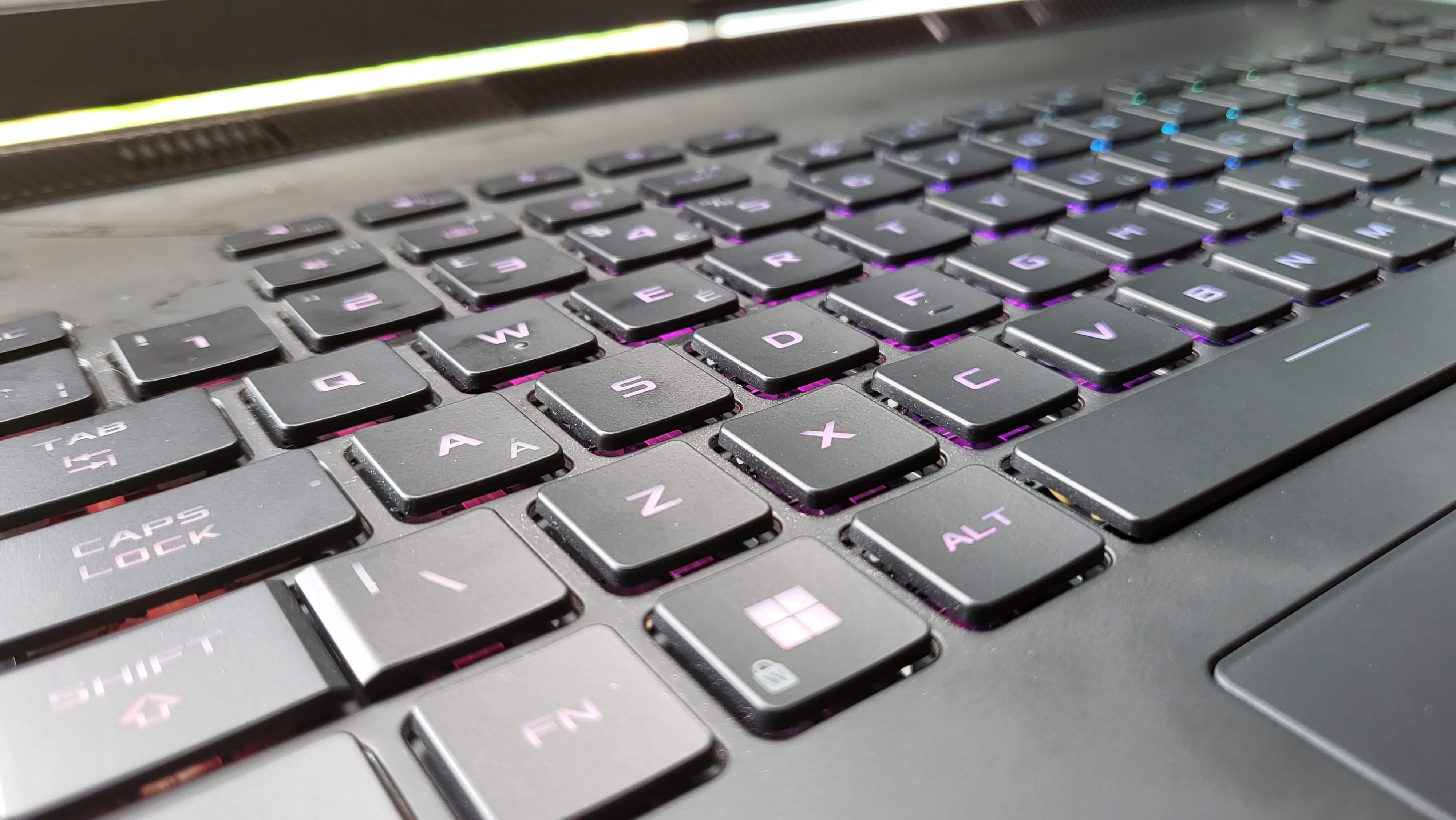
Specifications
Reasons to buy
Reasons to avoid
✅ You want a big screen: This laptop boasts an 18in screen that’s ideal for those who want a bigger display for working on models.
✅ You want a laptop that’s capable of playing games: Like many laptops suitable for architectural work, this one is a gaming machine with some excellent specs.
❌ You need real portability: It’s big, it’s heavy, and it’s not one you’ll want to carry around with you all day.
❌ You don’t need the 18in screen: This is an expensive laptop, and for the money, you can get a smaller but well-specced machine.
The Asus ROG Strix Scar has long been a favorite for architecture students for its powerhouse performance in gaming and beyond. The latest version now boasts a max configuration of Intel Core Ultra 9 275HX processor, Nvidia RTX 5090 GPU, up to 64GB RAM, and 4TB SSD storage.
That’s a lot of laptop right there, and we liked it so much, we ranked it among the 10 best laptops of CES 2025 we checked out. However, even older versions will be well-equipped for dealing with architecture software and the latest games.
In our tests on the 2023 model, we found the laptop offered class-leading speed, describing it as “a muscular machine” when it comes to graphics-heavy tasks like high-end gaming. Expect similar results while modeling and rendering architectural designs. And that screen delivers excellent resolution, speeds, and color reproduction, hitting 100% DCI-P3 color gamut. It’s difficult, in fact, to express just how pleasant it is to sit in front of this display.
Downsides, then, would be the average battery life (a little over five and a half hours during heavier workloads in our tests), and the sheer size and weight of this laptop, which limits overall portability. Still, it runs cool and quiet, and has some of the best specs you can get from a laptop like this.
Read our full Asus ROG Strix Scar 18 (2023) review
Best 18in alternative laptop for architecture students

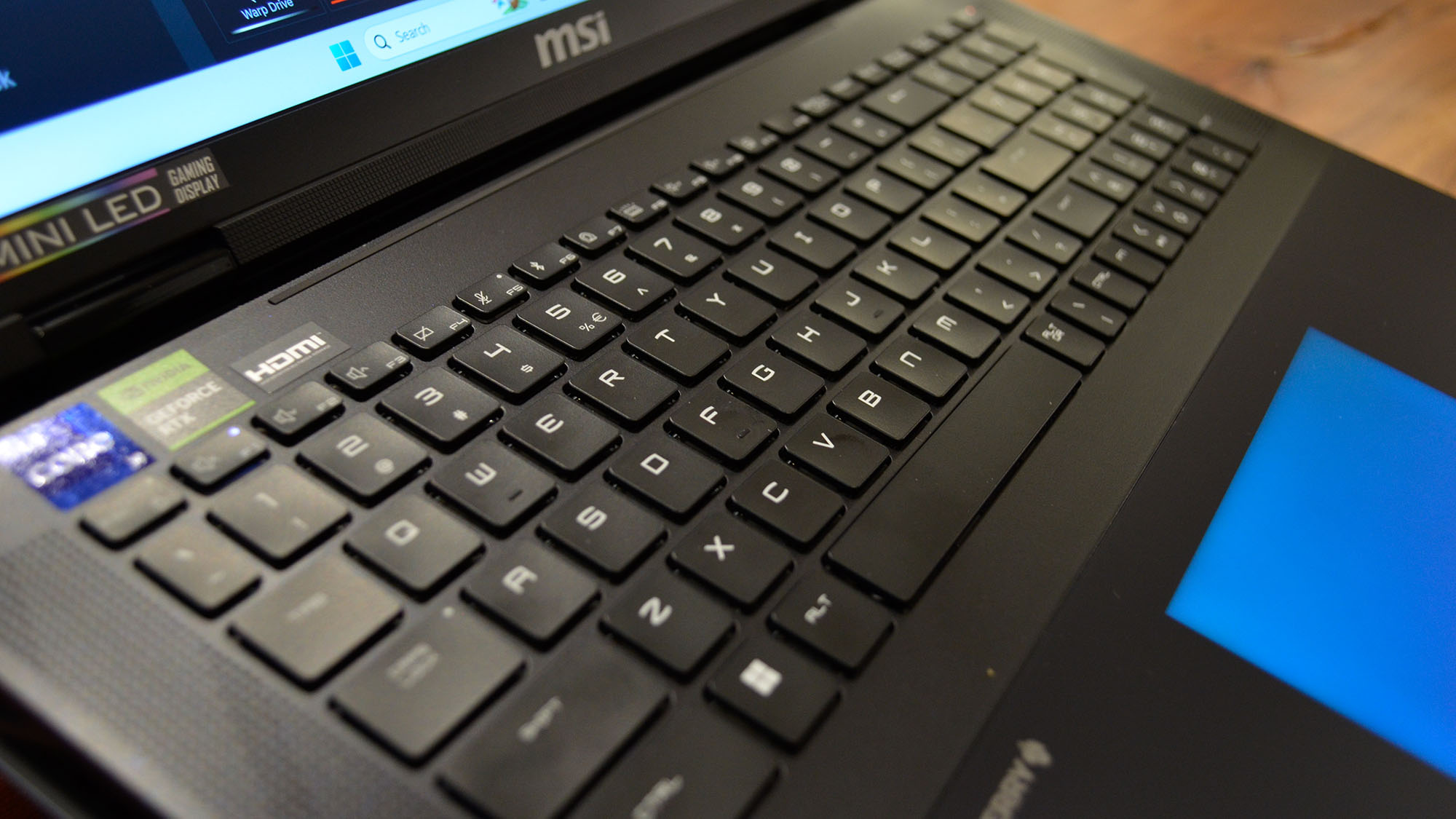

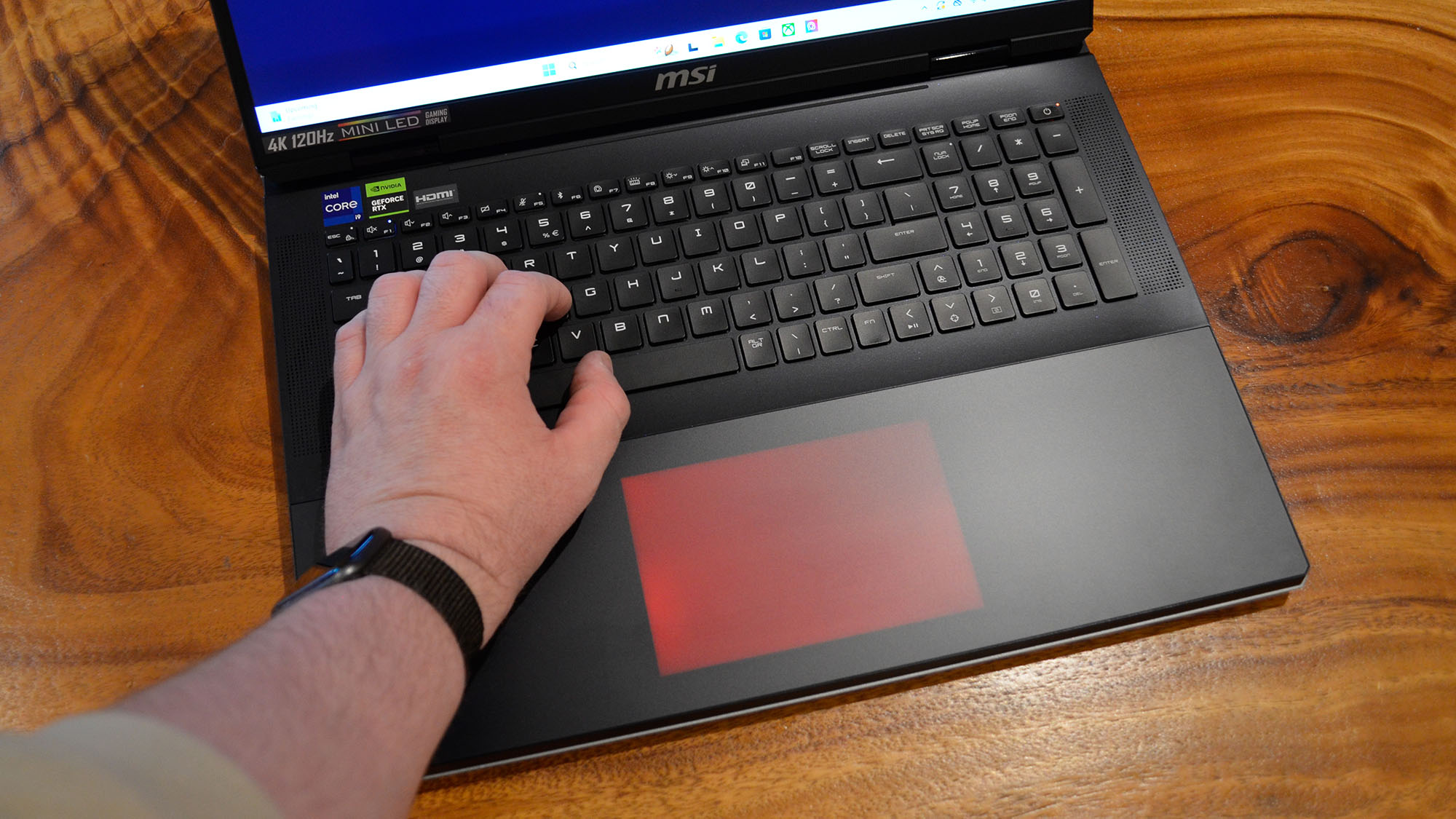
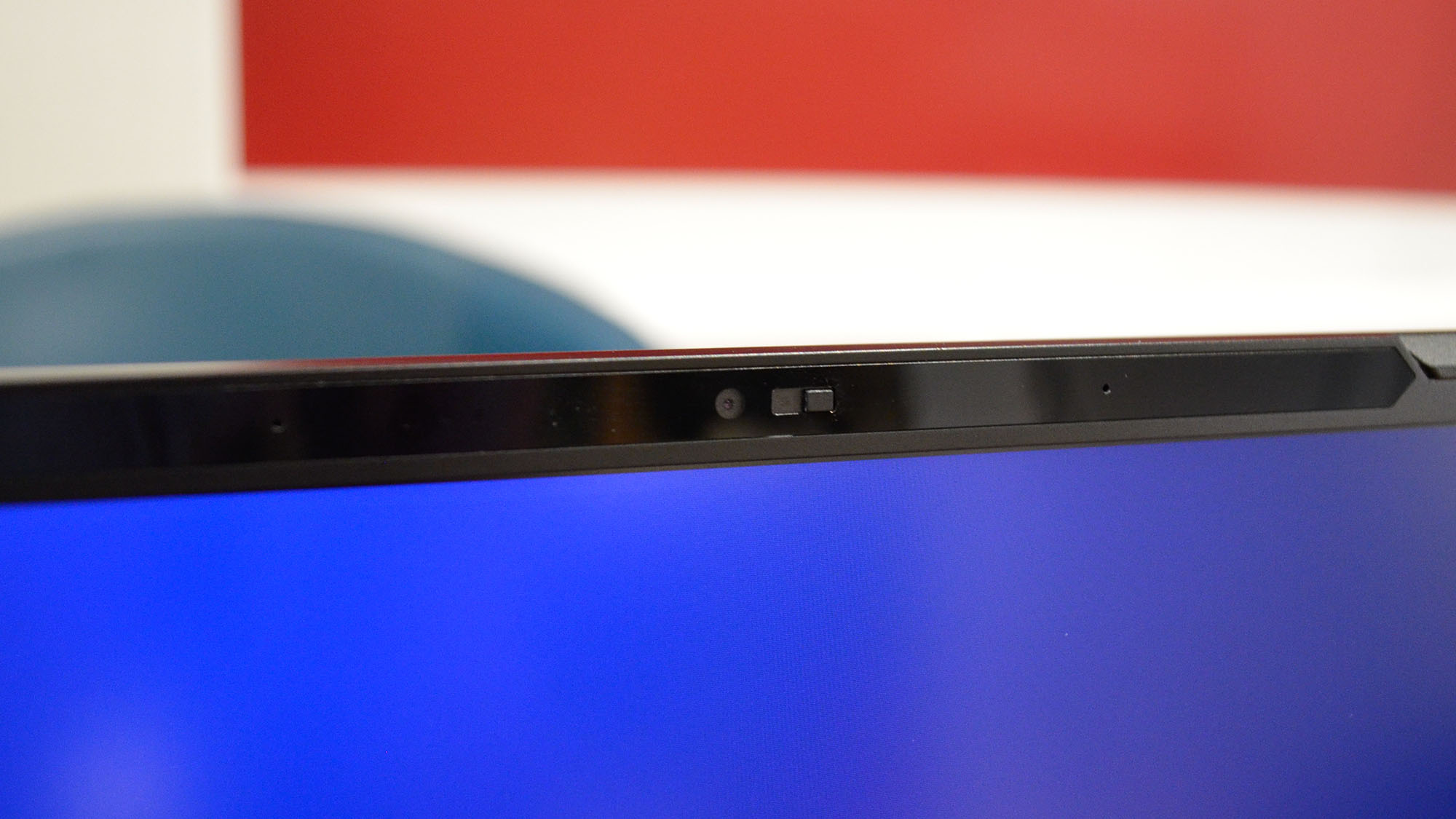
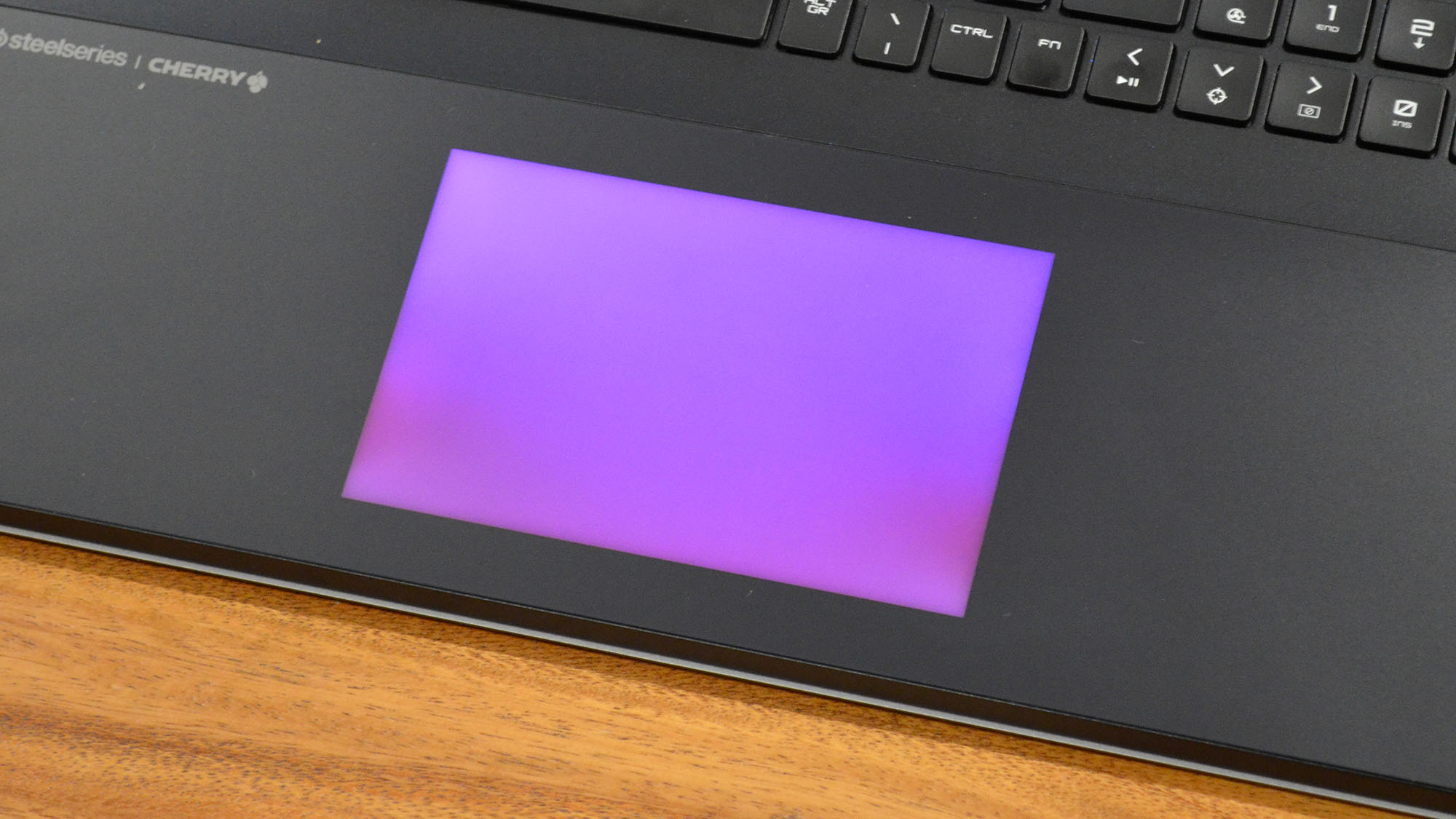
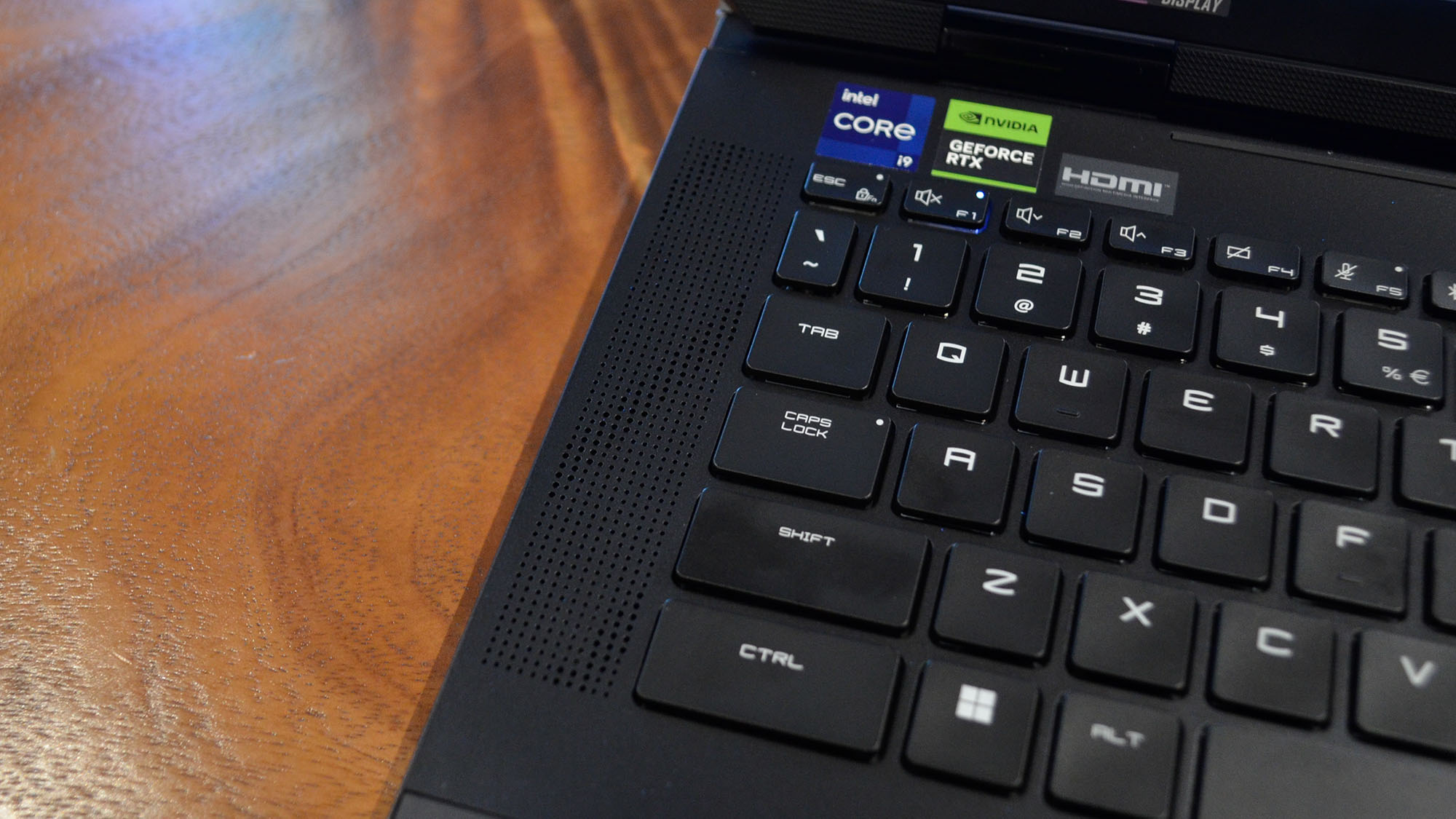


Specifications
Reasons to buy
Reasons to avoid
✅ You’re a gamer: Like many in this round-up, it has all the specs you need for gaming and using architecture software and won’t miss a beat.
✅ You want a top-end machine: The MSI Titan 18 HX has always boasted top-of-the-line components, and the newest model is no different.
❌ You’re on a budget: This isn’t a cheap laptop and absolutely not one for those working to a tight budget.
❌ You’re not into games: For the price, this is a high-end gaming machine, but if you’re not looking to play games, there are better options in this price range.
The MSI Titan 18 HX is another high-end gaming laptop with everything a dedicated architecture student is going to want for coursework and classes. Like the ROG Strix Scar, this was another that made our round-up of the best CES 2025 laptops - and with good reason.
The latest model boasts an Intel Core Ultra 9 275HX CPU, Nvidia RTX 5090 GPU, and up to 96GB RAM. The 18-inch mini LED screen is just as impressive, hitting 4K resolution in the 16:10 aspect ratio, with a 100% DCI-P3 color gamut and a 120Hz refresh rate. When we reviewed last year’s model, which is still a mighty choice for architects, we found it delivering top-class performance across the board.
Even compared to laptops of similar size and specs, battery life is decidedly low - we squeezed a little under three hours out of a single charge just browsing the internet. With that in mind, this is one for use in one or two locations where you're always near a mains outlet. An odd choice, I feel, for a laptop commanding a $5000 investment.
Still, if that’s not a deal-breaker for you - and given the top-flight performance here, it may be a fair trade-off - you’ll find an incredibly powerful graphics-driven laptop highly suitable for all kinds of architectural work.
Read our full MSI Titan 18HX review
Best desktop replacement laptop for architecture students
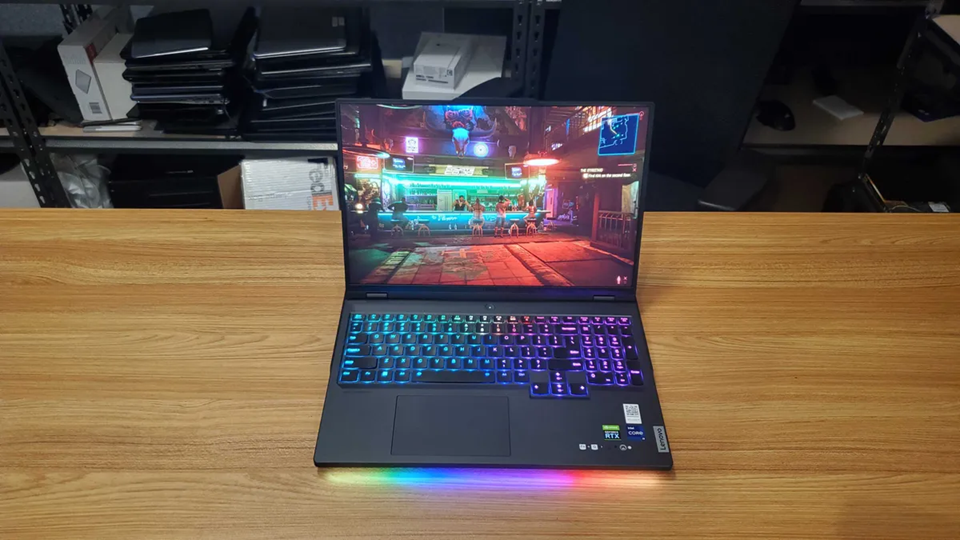

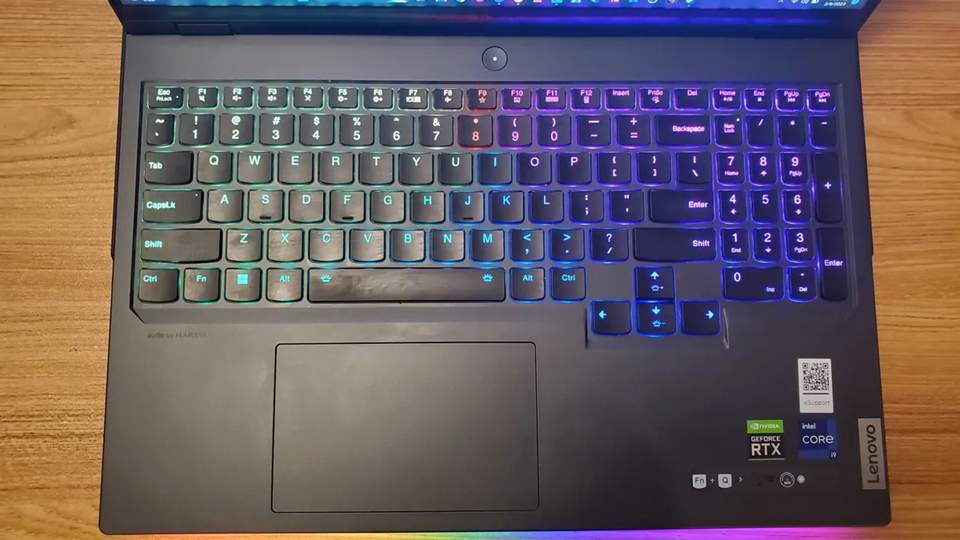


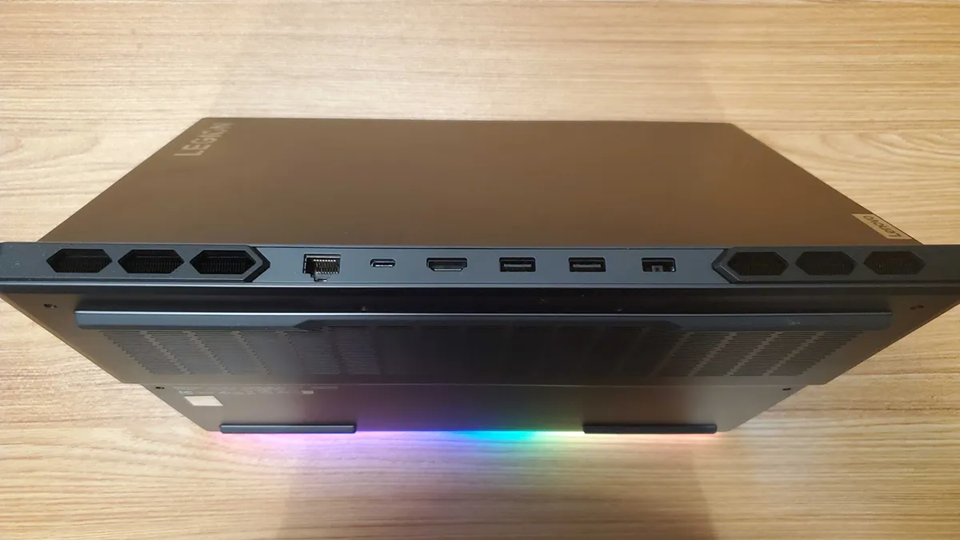

Specifications
Reasons to buy
Reasons to avoid
✅ You want a desktop replacement: If you’re looking to switch out a desktop PC for a laptop, the Lenovo Legion 7i Pro is a solid pick.
✅ You want a keyboard with good travel: Like the ThinkPads, this keyboard has a key depth travel of 1.5mm for a better typing experience.
❌ You prize looks over performance: Despite the RGB backlit keyboard, the overall design is pretty modest and it’s not going to win any beauty contests.
❌ You’re on a budget: With the specs on offer, this laptop is in no way a cheap option. But it is an investment that should last.
The Lenovo Legion 7i Pro is Lenovo’s gaming machine, and it certainly delivers on its promise of graphical prowess, making it an excellent pick for architecture students.
Alright, it might not be much to look at - even with its RGB keyboard and sci-fi aesthetic, the rest of the laptop isn’t much of a stunner. But that’s hardly a deal-breaker, especially when you consider the performance levels with this laptop. Available in a range of configurations, the max build comes with an Intel Core Ultra 9 275HX processor, Nvidia GeForce RTX 5090 GPU, and up to 64GB RAM. Whichever model you choose, you’ll find a 16in OLED screen at 2.5K resolution.
When we took the Legion 7i Pro out for a spin, we found it capably earned its designation as a desktop replacement. This just knocks the spots off of almost all other laptops of its class. Our biggest issue was, despite having three fans for ventilation, it still ran warm after a few hours, and we hope the latest Gen 10 version has solved this issue.
We also found battery life to be poor, hitting a little over two hours, so it’s another laptop that needs ready access to a wall outlet. But it features an excellent selection of ports, impressive amounts of power, and a worthwhile investment for those looking for a laptop for work and play, set to last way beyond the duration of the course.
Read our full Lenovo Legion Pro 7i review
Best portable laptop for architecture students
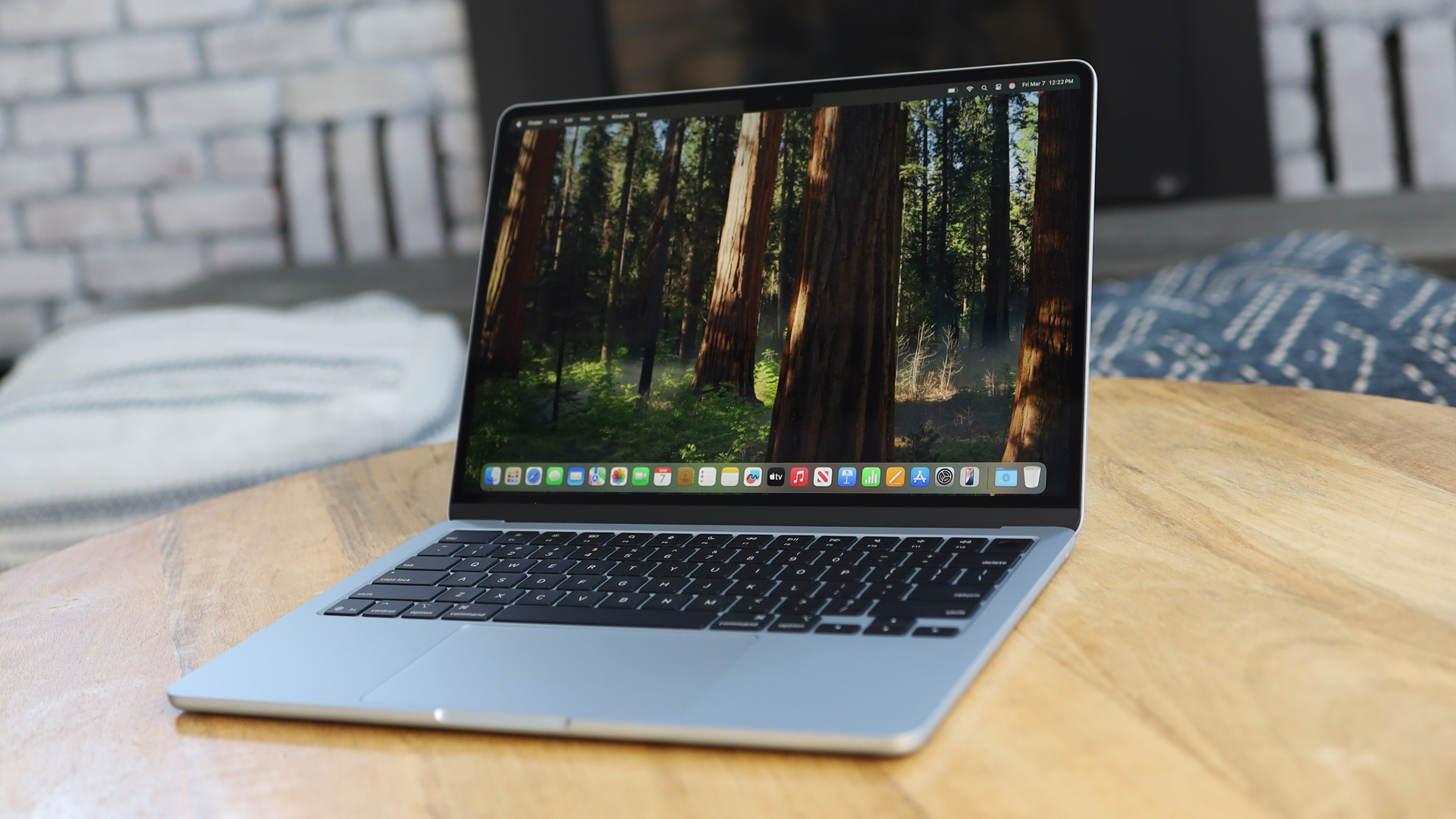

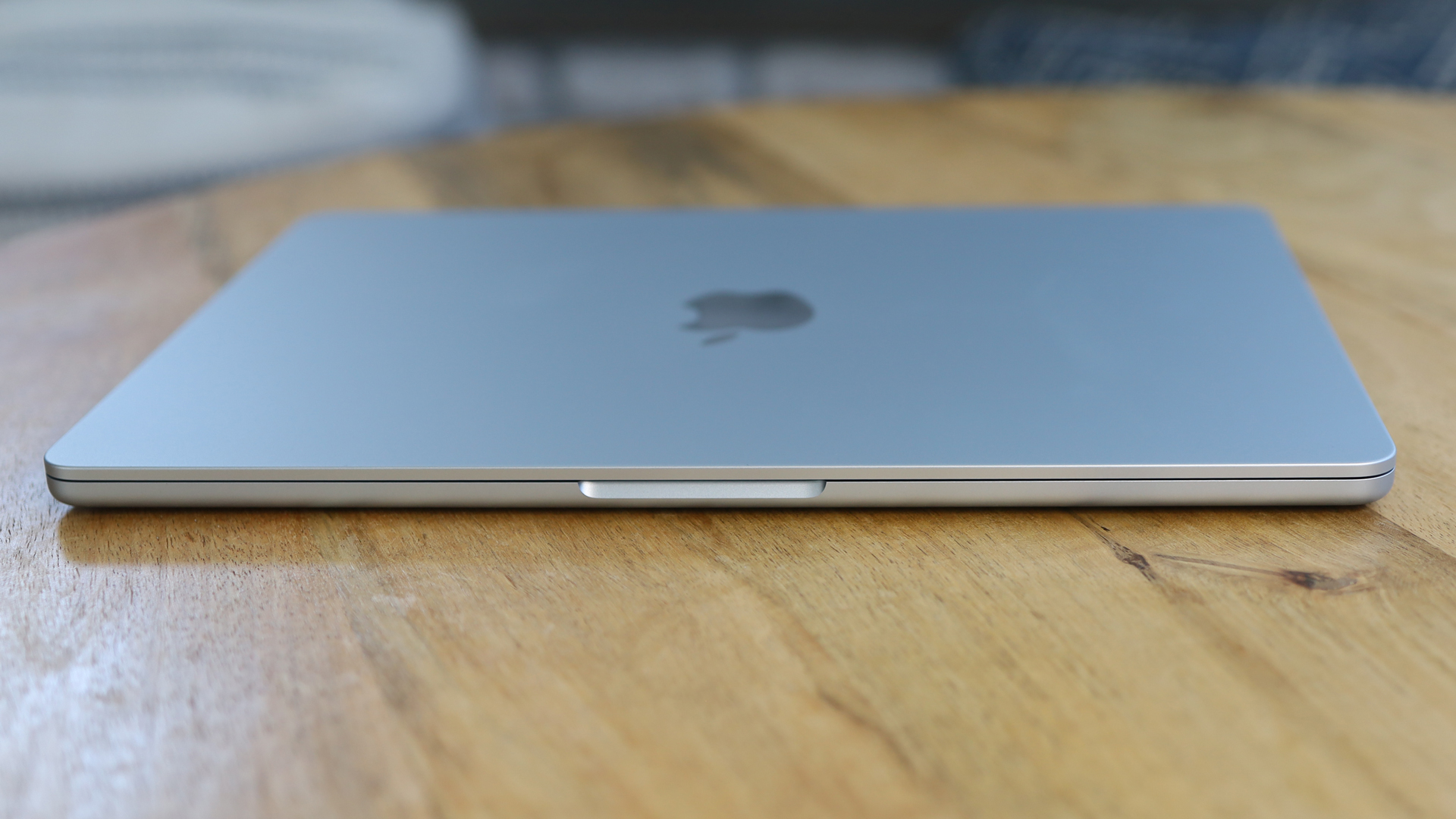
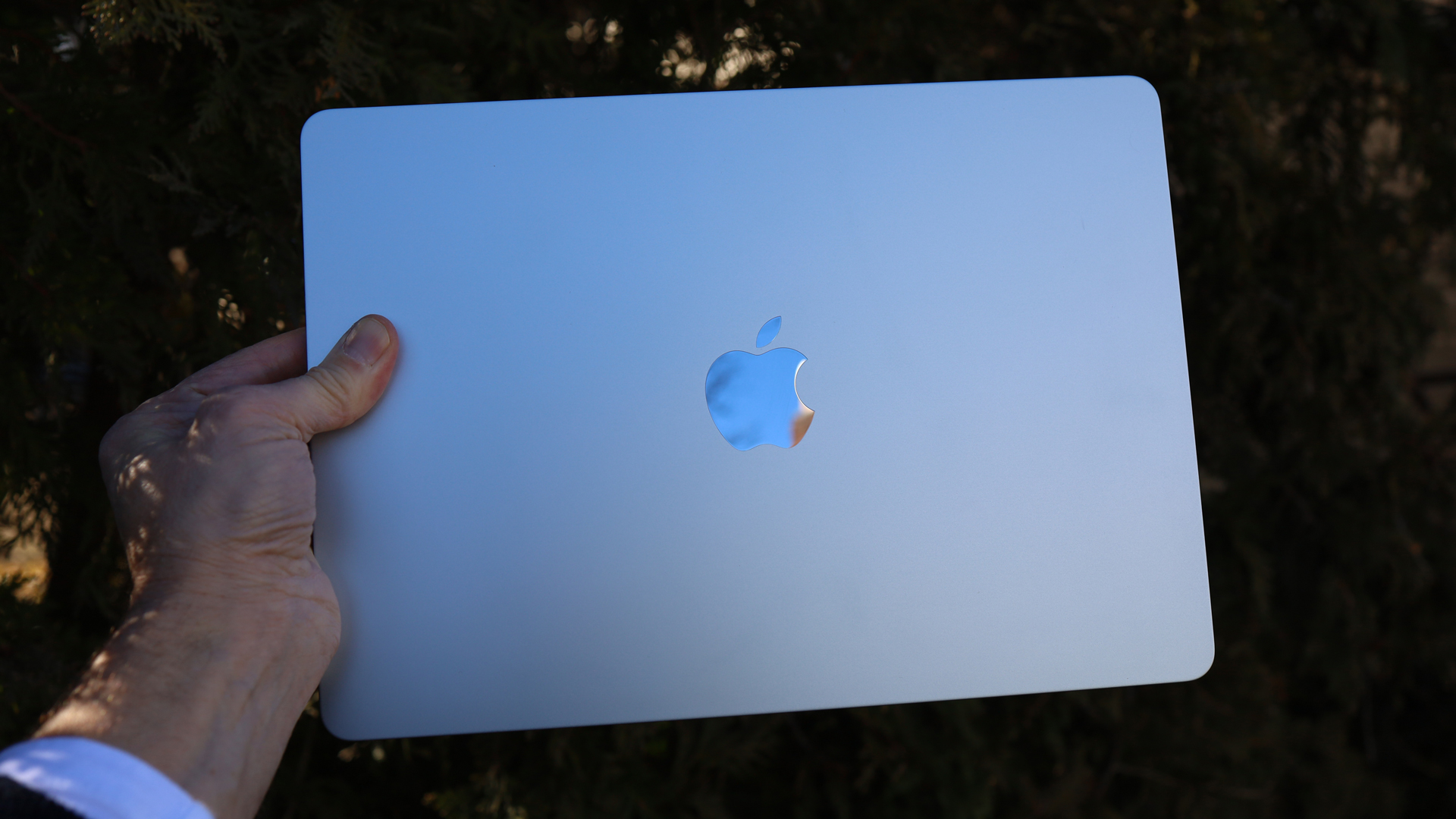
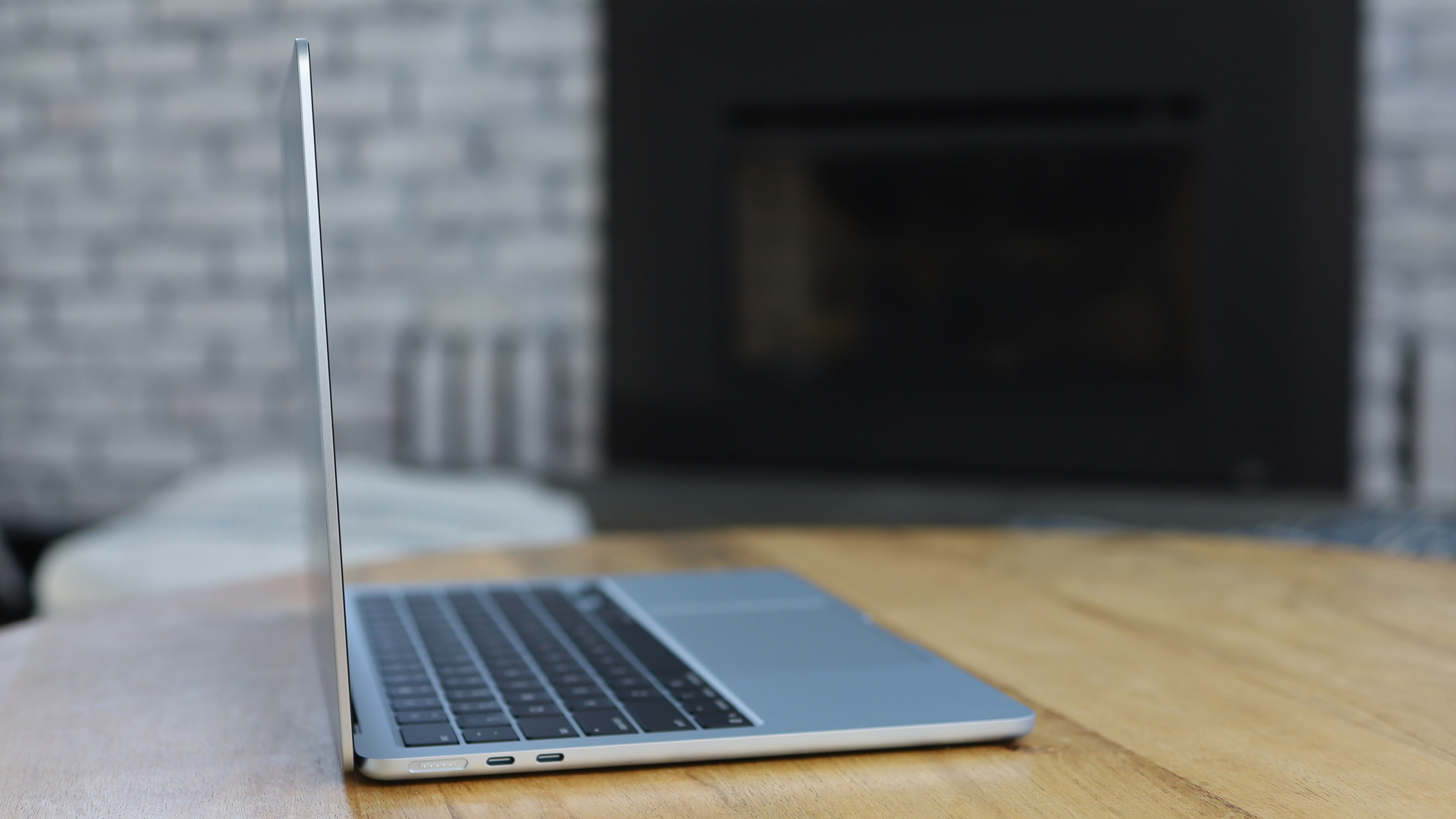
Specifications
Reasons to buy
Reasons to avoid
✅ You want an affordable MacBook: Starting at under $1,000, the base MacBook Air offers exceptional value for money given the potency of the M4 chip.
✅ You need to work on the move: The MacBook Air is just as thin as ever and exceptionally lightweight – it's the perfect travel companion.
❌ You need a large screen: Consider the 15-inch MacBook Air if you're regularly working in software like CAD and you value the extra display real estate.
❌ You want the most powerful machine: While the M4 is a fantastic chip, the M4 Pro and M4 Max will truly unlock any bottlenecks you might get.
The Apple MacBook Air series is one of our favourites, and the newest addition to the family certainly lives up to its reputation. This machine retains the same excellent build quality and sleek design, with the new M4 chip offering all the power you could need in such a compact package. Overall, it's a wonderful laptop for architecture students who need to work on the move or between classes.
Although you don't get the extra power levels that the M4 Pro or M4 Max chip unlock (with the MacBook Pro), you do benefit from a much lower price point, with the base model starting at under $1,000. This entry point in the MacBook family is best suited to you if you're an architecture student who's just starting out in the field and wants a machine to learn with. In that sense, you can run software like AutoCAD and any Adobe application without breaking much of a sweat. The MacBook Air also runs silent in light of no cooling fan – while the body might feel a little warm during extended rendering sessions, we've never experienced any major hiccups.
With an incredibly crisp display and a lengthy battery life, the MacBook Air 13-inch (M4) is a winner for any architecture student who needs to work away from the desk regularly, either in between classes or while in transit.
Read our full MacBook Air 13-inch (M4) review
Best 2-in-1 laptop for architecture students
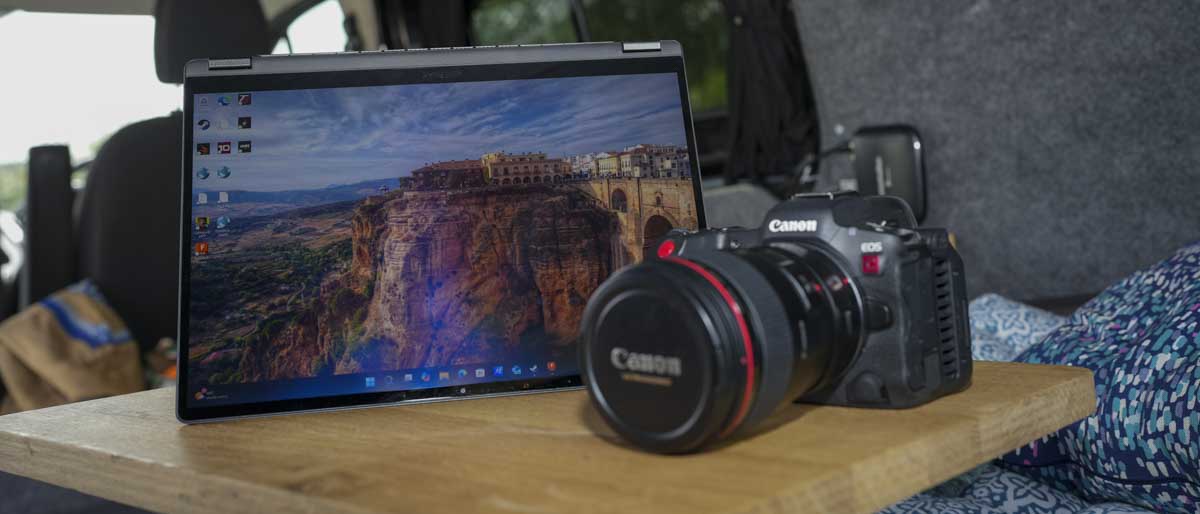

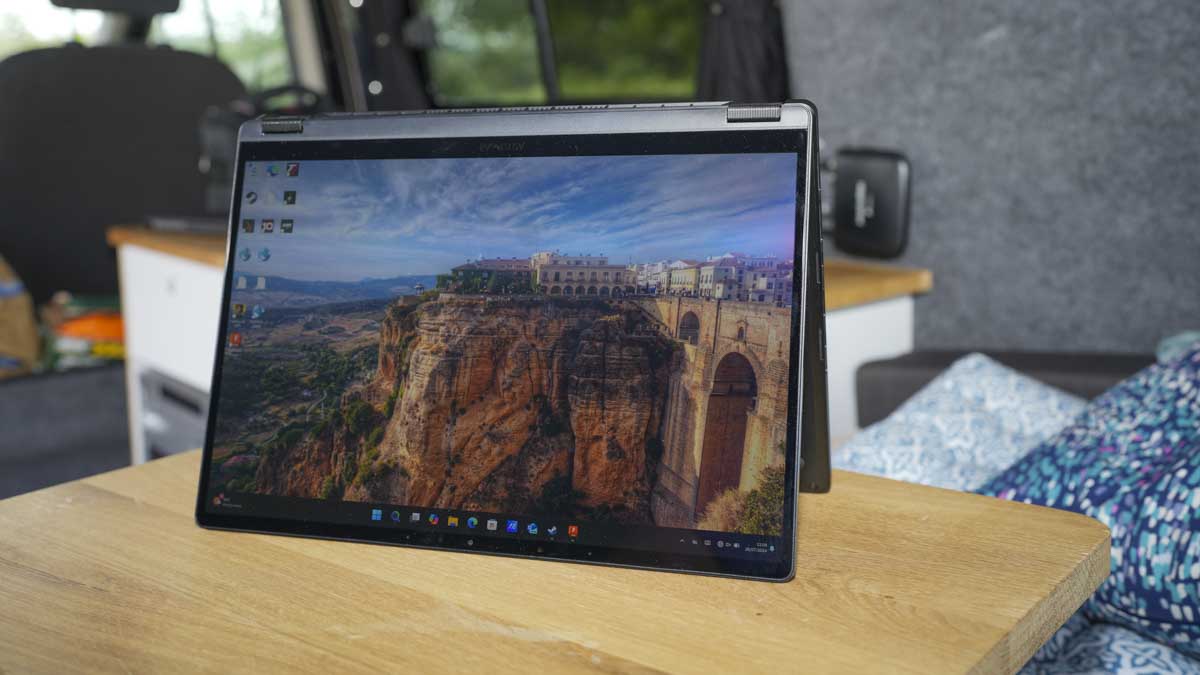



Specifications
Reasons to buy
Reasons to avoid
✅ You want a dedicated GPU in a 2-in-1: Hybrid devices with a discrete graphics card are hard to come by, but the excellent Nvidia chip in this machine will serve you well.
✅ You want maximum versatility: The hybrid form factor is an excellent choice for students who need to use a tablet every now and then.
❌ You want need a large screen: The display is only 13.3 inches wide, so you should avoid it if you need the extra screen space.
❌ You only need a laptop: You're investing in the hybrid design, so if you don't need the tablet option, simply pick one of the best clamshell laptops instead and put your money to better use.
A hybrid 2-in-1 machine with a dedicated graphics card is a rarity, so when you come across one, you should strongly consider it, especially one as powerful and vibrant as the Asus ProArt PX13. This is a device that is tailor-made for creative professionals and is one of the most versatile machines out there for architecture students.
This is a compact device that can be used in an array of configurations in various settings, making it highly suitable for those who need a device to use on the move. With a powerful AMD processor and mid-range Nvidia graphics chip (you can choose between the GeForce RTX 4060 or 4070), you'll be well equipped to run all kinds of software from AutoCAD to InDesign and anything in between. You also get a stylus if you want to make any quick sketches or write digital notes by hand.
The 3K OLED panel is also gorgeous, meaning you won't need to connect it to an external monitor for the best possible visuals. It's plenty bright enough, and also meets the DCI-P3 color standard at 100%.
The one drawback is its size; the 13.3-inch display is as small as we'd be comfortable recommending for architecture use cases, so you should think carefully if you are happy with a smaller panel. The cost is also a factor that might deter you, given it's considerably more expensive than similarly-sized machines. Ultimately, though, it's one of the best devices of its kind available right now.
Read our full Asus ProArt PX13 review
Best workstation for architecture students


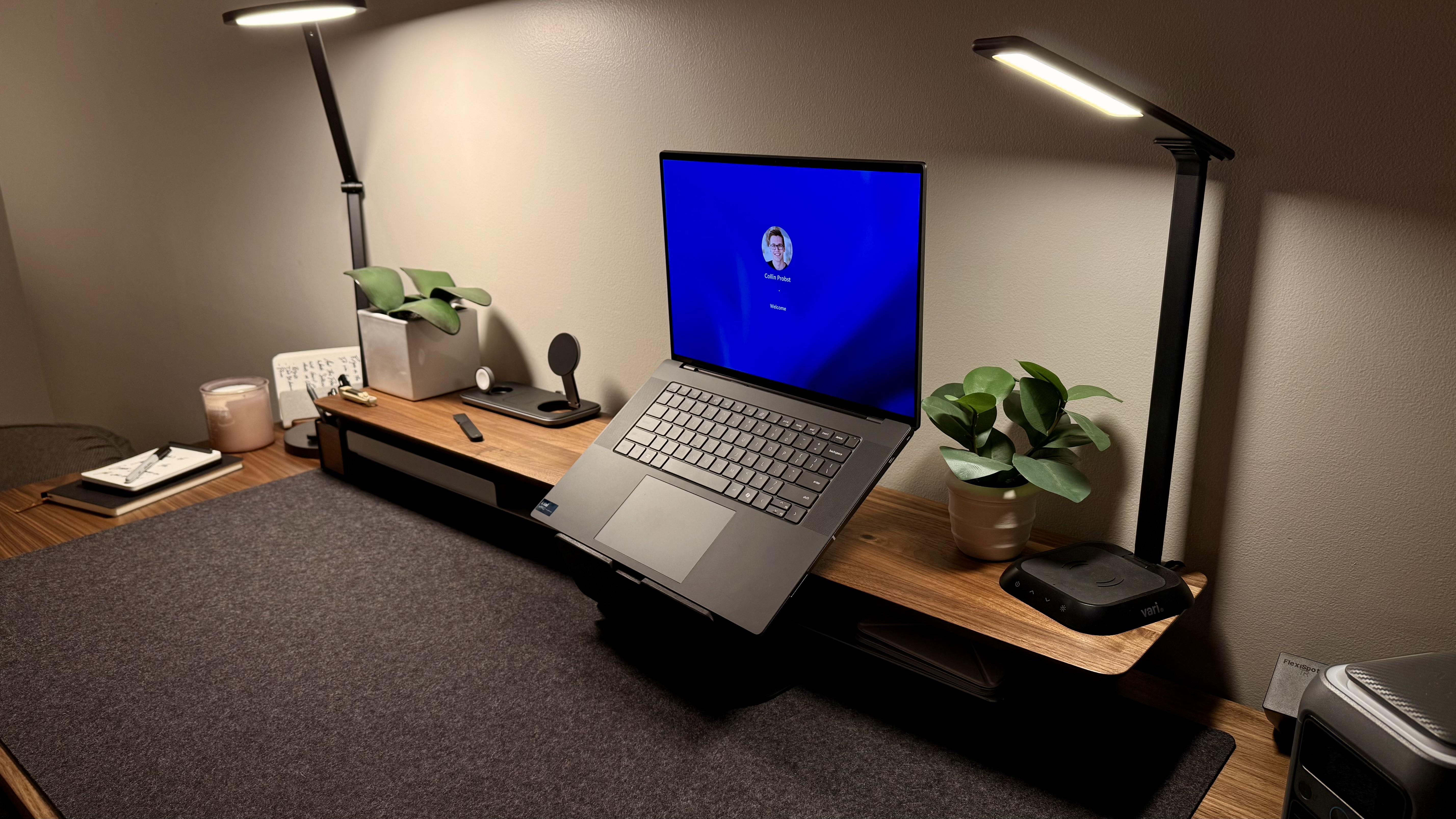

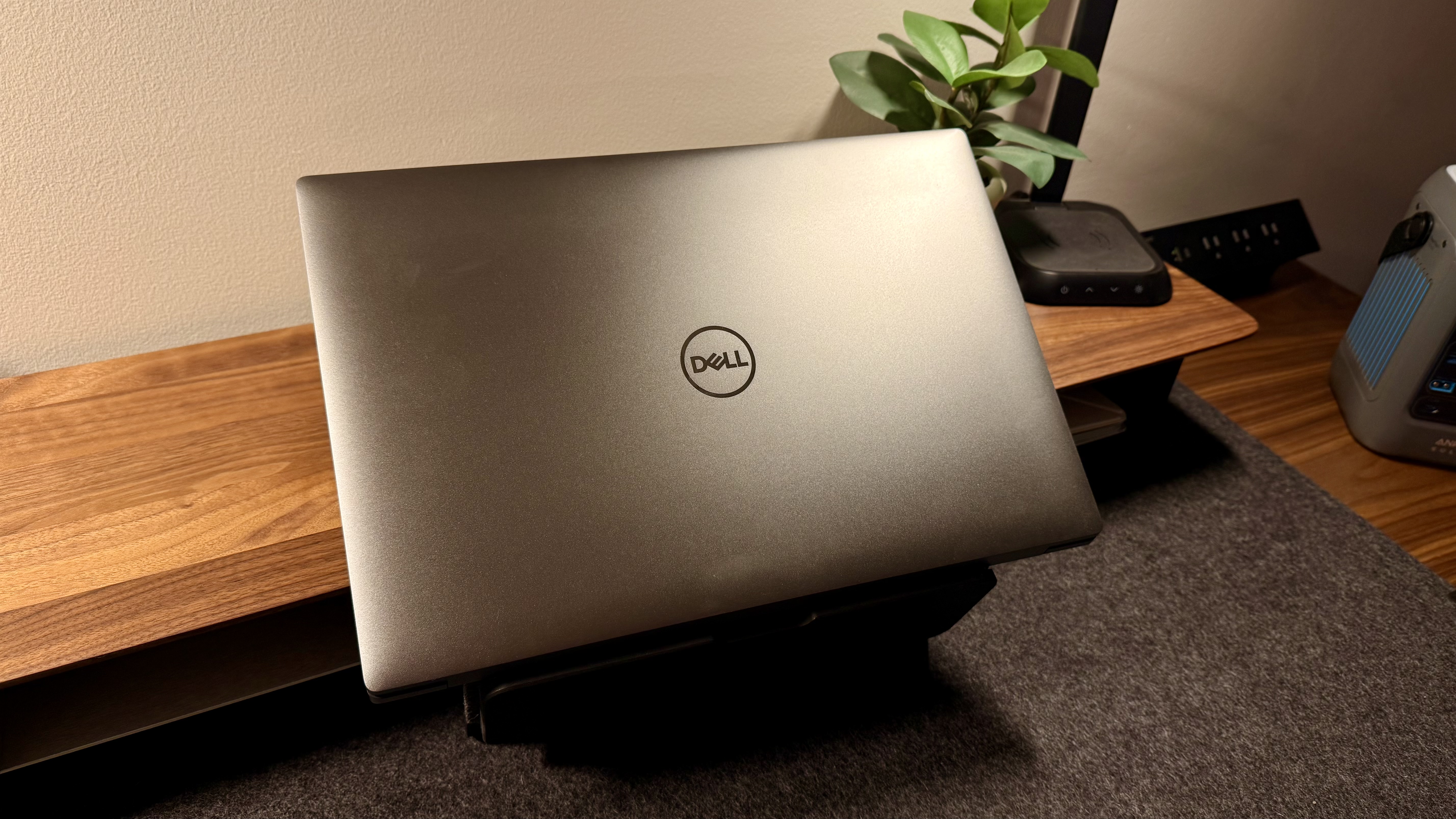
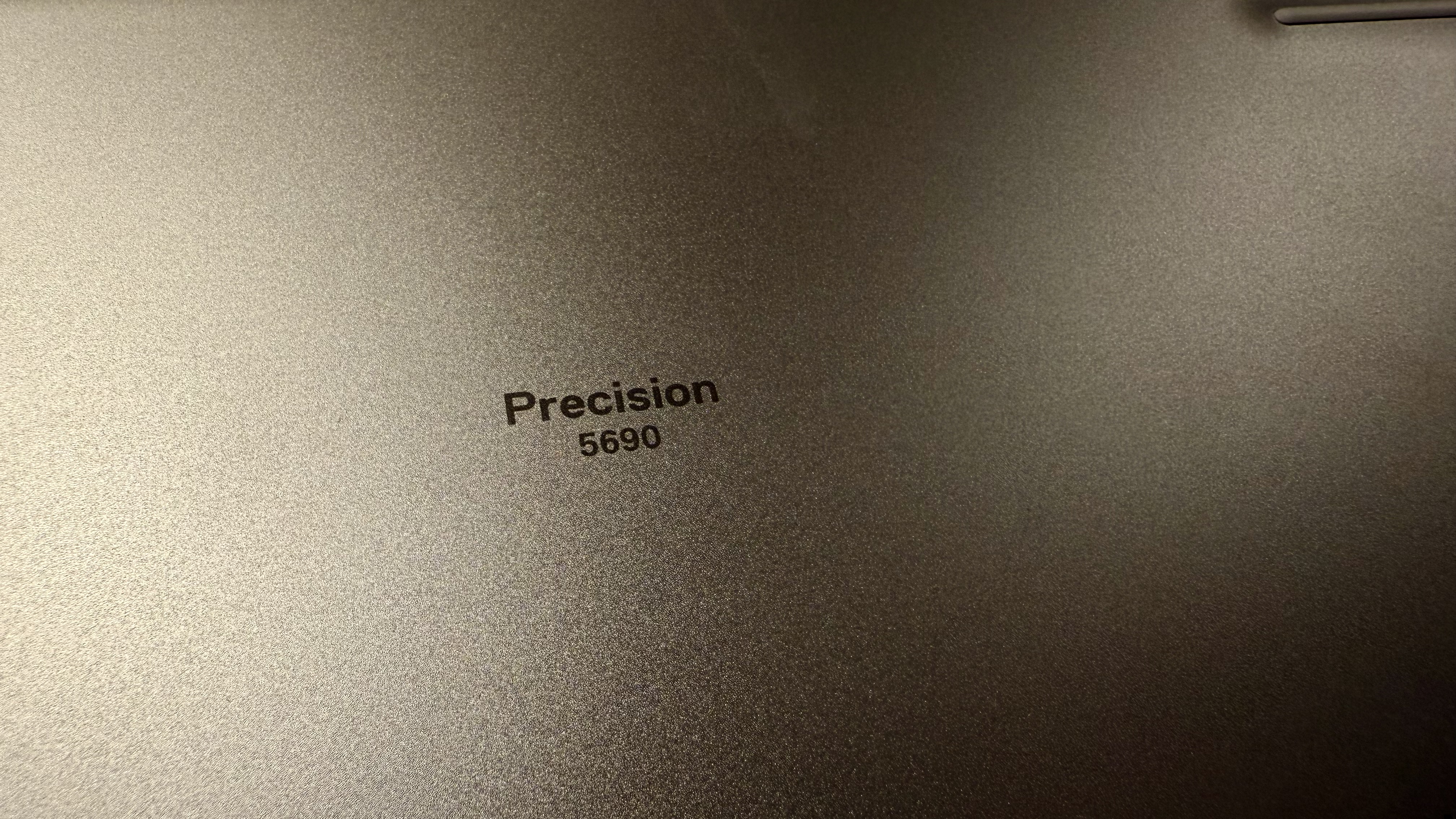

Specifications
Reasons to buy
Reasons to avoid
✅ You want a beefy Nvidia graphics chip: The RTX 5000 Ada is a bona fide powerhouse and should offer plenty of juice for all kinds of visual work.
✅ You want a stunning OLED panel: With DCI-P3 color standard of 100%, the sharp and vibrant OLED panel will really draw you in.
❌ You want a portable machine: While this as portable a 16-inch workstation as you can get, at 4.5lbs/2kg you should look for a lighter machine if you need maximum portability.
❌ You don't need this much power: Maxing out the specs will set you back thousands of dollars — and you can often get enough power at a fraction of the cost, especially if your needs are basic.
For advanced architectural needs and those looking to push the boundaries, the Dell Precision 5690 is the best workstation you could consider. While this is primarily a business machine, creative professionals will extract plenty of value from its attributes – from the dazzling OLED panel to the high-end components under the hood.
For a workstation, the Dell Precision 5690 is sleek and portable. While it won't be as light or compact as a MacBook, you're ultimately comparing it with similar machines – and it comes out on top. This is thanks to its 4.5lbs/2kg weight, alongside its 0.87in/2.1cm thickness. So if you do need a larger machine to work with on the go, you could do much worse.
While its design and build quality are impressive, we were also more than pleased with its performance. The Intel Core Ultra 9 185H processor is an incredibly fast chip and. Paired with the Nvidia RTX Ada 5000 graphics card, it's more than suited to handle any 3D modeling, CAD or other heavy visual workloads. That said, this configuration will set you back $6,500 – so it's only really worth opting for if you plan on pushing this machine to its limits and consistently put it under heavy workloads. It doesn't even flinch if you run intense photo and video editing software.
If you are happy to stomach its price, you do also have access to an absolutely stunning OLED screen. This 16-inch 4K panel is 400 nits bright (above average) and hits the all-important 100% DCI-P3 color spectrum coverage – meaning it's suitable for professional needs. The only downside is thinking of why you'd really need a machine as powerful as this, but if you can answer that, there's little out there better for architectural workloads.
Read our full Dell Precision 9560 review
Best laptops for architecture students compared
Model | Screen | CPU | GPU | RAM | Storage |
|---|---|---|---|---|---|
16in, 2.5K or 4K | Up to Intel i9-13980HX | Nvidia RTX 1000 Ada – RTX 5000 Ada | Up to 192GB | Up to 8TB | |
15.6in, FHD | Up to AMD Ryzen 7 5800H | Up to NVIDIA GeForce GTX 3050 Ti / AMD Radeon 6500M | Up to 16GB | Up to 1TB | |
16in, 4K | AMD Ryzen AI 9 HX 370 | Nvidia GeForce RTX 4050 - 4070 | Up to 64GB | Up to 2TB | |
16in, 4K | Apple M4 Pro - M4 Max | Up to 40-core GPU | Up to 48GB | Up to 1TB | |
16in, 2.5K | AMD Ryzen AI 9 HX 370 | Nvidia RTX 5070 Ti - 5090 | Up to 64GB | Up to 4TB | |
17in, 4K | Up to Intel Core i9-13900H | Nvidia GeForce RTX 4050 - 4080 | Up to 64GB | Up to 8TB | |
18in, 2.5K | Intel Core Ultra 9 275HX | Nvidia GeForce RTX 5080 - 5090 | Up to 64GB | 1TB + 1TB | |
18in 2.5K, 4K | Up to Intel Core Ultra 9 200HX | Nvidia GeForce RTX 5080 - 5090 | Up to 96GB | Up to 6TB | |
16in, 2.5K | Intel Core Ultra 9 Processor 275HX | Nvidia GeForce RTX 5070 Ti - 5090 | Up to 64GB | Up to 2TB | |
13-inch Liquid Retina | Apple M4 | Up-to 10 core | Up to 36GB | Up to 2TB | |
13.3-inch OLED | AMD Ryzen AI 9 HX 370 | Nvidia GeForce RTX 4070 | 32GB | 2TB | |
16-inch, 4K OLED | Intel Core Ultra 9 185H, 16 cores | NVIDIA RTX 5000 Ada with 16GB GDDR6 | Up to 64GB | Up to 8TB |
Best laptop for architecture students: FAQs
What are the minimum laptop requirements for architecture students?
Laptops suitable for architecture students are generally focused around graphics cards and memory, as the software can be pretty resource-intensive. It's why you'll see a lot of crossover between gaming laptops, video editing laptops, and even machines for engineering students.
Here's what I'd suggest going for - and if your budget allows, max out those specs as much as you can, especially with a dedicated GPU and RAM.
CPU: Intel i7, AMD Ryzen 7, or M3 Pro if you use a MacBook.
GPU: Discrete graphics cards are a must for running architecture software - avoid integrated graphics
RAM: You can just about get away with 16GB of memory, but I'd recommend 32GB and up for a smoother experience.
Storage: 1TB and above would be best to save all your models.
Display: Opt for a 16in screen at 1440p or above - you may not need 4K, but 2.5K is a good compromise.
Operating system: I'd generally advise using Windows 11 - you can use macOS, but some software, like Revit, won't work on Apple machines.
Are Apple laptops good for architecture students?
Apple MacBook laptops can be a good option, but you may find yourself limited by which software you can use. As noted above, Revit is Windows-only, and if that's being used on your course, you'll need a laptop running on Windows. In terms of graphical prowess, of course, a MacBook Pro is a great choice, especially the latest version with the M4 Pro and M4 Max chips.
Do architecture students need a powerful laptop?
Definitely. Many of the CAD and development tools required to tackle architectural tasks require lots of computing power to run smoothly.
We don’t just mean the CPU – it pays to get a laptop with a discrete Nvidia or AMD GPU and with lots of memory, too, to take advantage of GPU acceleration and ensure apps load quickly. For this reason, the best mobile workstations and high-performance gaming laptops are often a popular choice.
Laptops for architecture students running CAD applications and engineering tools always tend to require more power than everyday web-browsing, writing or even the best business laptops, and it pays to buy more power than you think you’ll need if you want to use your notebook for a long time.
Do the best laptops for architecture students need a big screen?
It certainly helps! It’s not the be-all and end-all when buying a notebook, especially if you want a portable device – but if you’ve got the space and bag capacity to have a 15.6in or 17in device, you’ll find it easier to become immersed in your work.
That said, getting a higher resolution rather than a bigger screen to ensure crisp, accurate visuals is arguably more important.
Is MacBook Air or Pro better for architecture?
While both are excellent machines, we would always recommend a MacBook Air 13-inch (M4) if you're just starting out or don't need to run the most intensive applications. This is especially the case if you're on a budget. However, the MacBook Pro (M4 Pro) is our pick as the best MacBook overall, thanks to its more advanced chip and additional cores that can really give you the extra firepower to run applications in a buttery smooth fashion. If you're a more advanced students or want to push your new machine to its limits, you should consider the MacBook Pro over the MacBook Air.
How to choose the best architecture laptop for you
When choosing the best laptop for an architectural course, there are a number of factors to consider.
Your first port of call should be the components –you need plenty of processor and graphics power to motor through architectural tools.
If you can, opt for a processor with at least four cores. And try to get full-power mobile chips rather than low-power versions, because that’ll ensure you get maximum processing ability from your chips.
Loads of RAM is essential to keep apps responsive – 16GB is great and 32GB is better. And make sure you’ve got at least 512GB of storage because files and architectural apps can get pretty big.
Beyond the silicon, if you’re studying or working in architecture then you could be working in the field and working days could be pretty lengthy, so a laptop with a robust chassis, rugged design features and good battery life is a must. Similarly, get a notebook with plenty of ports and Wi-Fi 6E so you can connect to networks, peripherals and external storage devices no matter your location.
Also ensure that you get an operating system that runs the best architecture software or best 3D modeling software you need – some of these apps won't run on macOS, although all of them will generally run on Windows laptops.
How we test the best laptops for architecture students
Our team of reviewers have gone hands-on with hundreds of the best laptops - so we know exactly what to look for when putting the best laptops for architecture students to the test.
We conduct rigorous research, comparing internal specs and storage, and testing performance in a series of benchmark tests. We want to see laptops that will be able to cope with resource-intensive architectural apps.
We also assess the overall portability of the best architecture student laptops, looking for those that are lightweight (relative to internal specs and screen size) and easy to carry around campus and beyond. As part of our portability testing, we conduct a real-world battery life test so you know how long you can create designs on the go without searching for a plug point.
After checking how well the trackpad and keyboard work - making sure they’re comfortable for prolonged use in class - we assess all connectivity and port options (the more the merrier), screen size and resolution, and additional features, such as webcam quality and upgradability. Finally, we compare the best laptops for architecture students against the competition to ensure each device offers genuine value for money for each user.
Find out about our testing process in How we test laptops and desktops: our reviewing process explained.
Get in touch
- Want to find out about commercial or marketing opportunities? Click here
- Out of date info, errors, complaints or broken links? Give us a nudge
- Got a suggestion for a product or service provider? Message us directly
- You've reached the end of the page. Jump back up to the top ^
Sign up to the TechRadar Pro newsletter to get all the top news, opinion, features and guidance your business needs to succeed!

Steve is B2B Editor for Creative & Hardware at TechRadar Pro, helping business professionals equip their workspace with the right tools. He tests and reviews the software, hardware, and office furniture that modern workspaces depend on, cutting through the hype to zero in on the real-world performance you won't find on a spec sheet. He is a relentless champion of the Oxford comma.

